Full Schedule
Full Schedule
- Wednesday, July 10, 2024
- PLENARY SESSION - 9:30 AM WEDNESDAY
-
9:30 AM - 11:30 AM CESTPLENARY I: PRESIDENTIAL SYMPOSIUMChair: Amander T. Clark, PhD (she/her/hers) – University of California, Los AngelesPlenary Speaker: Magdalena Goetz, PhD (she/her/hers) – Ludwig-Maximilian University of Munich (LMU)Plenary Speaker: Tina Mukherjee, PhD (she/her/hers) – Institute for Stem Cell Science and Regenerative Medicine (inStem)Plenary Speaker: Kathrin Plath, PhD – University of California Los Angeles School of MedicinePlenary Speaker: Sarah Teichmann, FRS, FMedSci (she/her/hers) – Wellcome - MRC Cambridge Stem Cell Institute & Department of Medicine
The Presidential Symposium aims to showcase cutting-edge research from global leaders in the field of tissue stem cells, pluripotent stem cells, stem cell genomics and machine learning.
-
12:00 PM - 1:00 PM CESTBLUEROCK CLINICAL TRIALS WORKSHOP SPECIAL SESSION: ADVANCES IN THE TREATMENT OF PARKINSON’S DISEASE: THE POSSIBILITIES OF CELL THERAPIESPresenter: David Pedrosa – Universitätsklinikum Giessen und Marburg, Standort Marburg, BaldingerstraßePresenter: Viviane Tabar, MD – Memorial Sloan Kettering Cancer Center
Parkinson’s disease affects more than 8.5 million people worldwide and is the second most common neurodegenerative disease, after Alzheimer’s disease. Current pharmacotherapeutic strategies for treating Parkinson’s disease motor symptoms include augmenting dopamine levels in the brain through dopamine agonists, enhancing dopamine bioavailability, or limiting levodopa degradation. However, these treatments are associated with motor complications, including the development of dyskinesias and narrowing of the therapeutic window, and adverse effects such as exacerbation of non-motor symptoms. Further, these therapies do not address the loss of dopaminergic neurons; thus, there remains a critical need for novel therapies for Parkinson’s disease. The transplantation of dopaminergic neuronal cells into the putamen is an innovative strategy for restoring dopaminergic function in the brains of people with Parkinson’s disease. In this session, we will discuss the advancements in surgical techniques involved in the delivery of cell therapies in the brain. We will also discuss emerging data from the first-in-human phase 1 trial of bemdaneprocel, an hESC derived allogenic, dopaminergic progenitor cell therapy.
- INNOVATION SHOWCASES - 12:00 PM WEDNESDAY
-
12:00 PM - 12:25 PM CESTISSCR STANDARDS IN ACTION: ADVANCEMENTS IN CELL LINE GENERATION AND ORGANOID INNOVATIONShowcase Presenter: Andrew Gaffney – STEMCELL Technologies Inc.
Join us for an insightful session on our latest advancements in cell line generation, featuring the SCTi003-A and SCTi004-A healthy control iPSC lines. These cell lines represent a significant step forward in the field, aligning with and advancing beyond the established ISSCR guidelines for stem cell research. Our presentation will focus on how these lines are shaping the future of stem cell research, including their central role in various applications and contribution to setting new benchmarks in research quality and ethical standards. We will spotlight iPSCdirect™, our efficient, ready-to-use, singularized iPSC product. Additionally, we will showcase the development of various differentiated types and organoids, including the launch of live, experiment-ready midbrain organoids, designed for immediate application upon delivery to your laboratory. Explore how these cutting-edge technologies are revolutionizing disease modeling, drug discovery, and more, while upholding our commitment to advancing research quality and ethical integrity.
Innovation Showcase -
12:00 PM - 1:00 PM CESTCuSTOMIZING ORGANOIDS FOR DRUG DEVELOPMENT AND REGENERATIVE MEDICINEShowcase Presenter: Magdalena Kasendra, PhD – Center for Stem Cell & Organoid Medicine (CuSTOM) at Cincinnati Children'sShowcase Presenter: Katie Kilgour, PhD – Ajinomoto Health & Nutrition North America, Inc.
The rapidly evolving field of stem cell biology is reshaping the medical landscape, offering new tools to enhance human health. At the Center for Stem Cell and Organoid Medicine (CuSTOM) at Cincinnati Children’s, a collaborative, cross-departmental hub of excellence, we harness breakthroughs in developmental biology and pluripotent stem cell technologies to develop three-dimensional tissue structures known as organoids. These platforms enable us to improve our understanding of human biology, model patient-specific diseases in a dish, and advance personalized medicine. However, challenges persist in realizing their full potential and practical applications. To bridge this gap, CuSTOM Accelerator (CA) was established in 2019, with a mission to translate innovations into actionable solutions, fostering synergies between academia and industry to drive the development of organoid-based drug discovery platforms and therapeutics for tissue regeneration and organ replacement. In this talk, I will elucidate our strategy for overcoming key challenges in organoid technology translation, with a keen focus on scalability, robustness, and in situ monitoring and characterization. Highlighting two pivotal organ models—the liver and intestine—I will unveil our pioneering efforts in developing fully automated AI-empowered organoid-based platforms for high-throughput drug assessment. Additionally, I will offer insights into our journey towards translating human organoids from bench to bedside, including our efforts on the establishment of cGMP-compliant scalable manufacturing of organoids in matrix-free suspension culture.
Innovation Showcase -
12:00 PM - 1:00 PM CESTTRANSFORMING HiPSC DIFFERENTIATION BY INCREASING EFFICIENCY AND FIDELITY FOR NPCS, HSCS, AND LPCSShowcase Presenter: Jessica Hartman – Cell Microsystems
Unlocking the full potential of patient-derived and genetically modified human induced pluripotent stem cells (hiPSCs) for disease modeling requires precise differentiation protocols. Despite the availability of various protocols and kits, the technical intricacies of hiPSC differentiation often lead to inefficiencies and reproducibility challenges. We aim to address these hurdles by leveraging CellRaft® Technology, offering solutions for hiPSC differentiation workflows. What you will learn: - How to enhance efficiency in hiPSC differentiation - How to automate the monitoring and isolation of neural progenitor cells (NPCs), ensuring high fidelity differentiation - How to improve hematopoietic progenitor cell (HSC) differentiation, leading to enhanced colony survival and yield - How to utilize technology to streamline differentiation by accurately purifying populations, increasing differentiation accuracy Overall, our findings underscore the significance of automating manual steps in hiPSC differentiation, highlighting how image-based monitoring, phenotypic selection, and isolation can enhance efficiency and fidelity, thereby expediting the development of relevant disease models.
Innovation Showcase -
12:00 PM - 1:00 PM CESTSTEM CELLS IN LOW EARTH ORBIT: THE NEXT FRONTIERShowcase Presenter: Michael Roberts, PhDShowcase Presenter: Meghan Everett, PhDShowcase Presenter: Catriona Jamieson, PhDShowcase Presenter: Valentina Fossati, PhDShowcase Presenter: Jeanne Loring, PhD – Scripps Research InstituteShowcase Presenter: Arun Sharma – Cedars-Sinai Medical Center Regenerative Medicine Institute
The " Stem Cells in Low Earth Orbit: The Next Frontier" at the ISSCR Conference aims to explore the groundbreaking intersection of stem cell research and the unique environment of low Earth orbit (LEO). This panel brings together leading experts to discuss the latest advancements, challenges, and prospects of conducting stem cell research onboard the International Space Station (ISS). Attendees will gain insights into how microgravity and the extreme space environment can influence stem cell behavior and the potential implications for regenerative medicine and biomanufacturing. Panel Objectives: 1. Highlight Innovations: Showcase recent innovations from stem cell research conducted in LEO and their potential applications for regenerative medicine and beyond. 2. Discuss Challenges: Address the scientific and logistical challenges of conducting stem cell research in space and potential solutions. 3. Future Prospects: Explore the future of stem cell research in space, including opportunities for collaboration to accelerate the translation of emerging technologies for applications on Earth. 4. Engage with Experts: Provide an interactive platform for attendees to engage with leading scientists and researchers in the field.
Innovation Showcase -
12:00 PM - 1:00 PM CESTTHE FUTURE OF CELL CULTURE: EMPOWERING RESEARCHERS TO MAKE KEY DECISIONS SOONER, ACHIEVE MILESTONES FASTER, AND GET TO CLINIC EARLIER—WITH LOWER ATTRITION RATESShowcase Presenter: Felix Spira – Molecular Devices
The majority of drugs fail in the later stages of the drug development pipeline and in clinical trials because of insufficient predictivity of cell models used to screen drug candidates. Organoids show great promise as a game-changer in disease modeling and drug screening since they better resemble tissue structure and functionality, and show more predictive response to drugs. However, challenges associated with using organoids, such as assay complexity, reproducibility, and the ability to scale up have limited their widespread adoption as a primary screening method in drug discovery. To alleviate the bottlenecks that come with labor-intensive manual protocols, we developed the CellXpress.ai™ Automated Cell Culture System. This instrument automates the entire 3D organoid or 2D cell culture workflow: providing media exchange, plating, passaging, organoid monitoring, end-point assay execution, and complex image analysis. It contains functional components including an automated imager, liquid handler, and incubator, connected by AI- powered software. The development of cell cultures is monitored by periodic imaging and analysis, which can trigger automatic decisions to initiate passaging, end-point assays, or troubleshooting steps. We will present the results from the automation of several commonly used 3D organoid protocols, as well as 2D assays.
Innovation Showcase -
12:00 PM - 1:00 PM CESTGENETIC WHACK-A-MOLE: BATTLING INSTABILITIES IN iPSCSShowcase Presenter: Brian Hawkins – Pluristyx, Inc.
With the ability to differentiate into all body tissue types and the potential for commercial scale manufacture, human induced Pluripotent Stem Cells (iPSCs) are an ideal starting material for the next generation of cellular therapeutics. However, inconsistency in the culture process can predispose cells to genetic abnormalities that can influence growth rate and differentiation efficiency. Persistence of these genetic alternations in the final product can introduce a safety risk to patients receiving these life altering therapies. Detecting genetic abnormalities is difficult, as no single assay can cover all potential alterations and may be at low levels that are below the detection limit of some assays. A combination of testing modalities at frequent and predetermined intervals can cover the most common genetic alterations and limit downstream risk. Similarly, culture strategies can be implemented to minimize the rate of de novo mutations and prevent abnormal colonies from overtaking genetically normal variants. This presentation will discuss the challenges of maintaining genetic integrity during the commercial manufacture of iPSCs and propose practical approaches to ensuring that clinical iPSCs are free of mutations for product development.
Innovation Showcase -
12:25 PM - 1:00 PM CESTIMPROVING THE GENETIC STABILITY OF SINGLE-CELL-PASSAGED HUMAN PLURIPOTENT STEM CELL CULTURES USING eTeSR™Showcase Presenter: Adam Hirst – STEMCELL Technologies Inc.
In this talk, we’ll discuss new genetic stability data on cultures maintained in eTeSR™, a novel human pluripotent stem cell (hPSC) maintenance medium, specifically developed to support routine single-cell passaging. The study comprises over 250 SNP microarray samples collected from clones derived using three hPSC lines and maintained for 20 weeks in four media conditions. The study shows that clones maintained in eTeSR™ acquire fewer de novo cytogenetic changes compared to two alternative, commercially available maintenance media. This improvement in genetic stability can be attributed to the absence of 20q11 gains in eTeSR™-maintained cultures, a recurrent abnormality that has been well-documented in hPSC cultures. This study provides a better understanding of culture-acquired genetic aberrations in hPSCs and demonstrates that innovative media formulations such as eTeSR™ can address major challenges in the hPSC field.
Innovation Showcase - PLENARY SESSION - 1:30 PM WEDNESDAY
-
1:30 PM - 3:35 PM CESTPLENARY II: NEW TECHNOLOGIES TO ENGINEER AND PHENOTYPE STEM CELL SYSTEMSCo-Chair: Filipe Pereira, PhD (he/him/his) – Lund UniversityCo-Chair: Barbara Treutlein, PhD (she/her/hers) – ETH ZürichPlenary Speaker: Jonathan Weissman, PhD – Whitehead Institute for Biomedical Research, HHMI, MITPlenary Speaker: Fabian Theis, PhD (he/him/his) – Helmholtz Zentrum MünchenPlenary Speaker: Susanne Rafelski, PhD (she/her/hers) – Allen Institute for Cell SciencePlenary Speaker: Matthias P. Lutolf, PhD – Institute of Human Biology (IHB) F. Hoffmann-La RocheAward Winner: Jun Wu, PhD (he/him/his) – University of Texas Southwestern Medical Center
Recent technological and analytical advances have made it possible to characterize stem cell systems at an unprecedented resolution. This session highlights emerging single cell and imaging technologies to phenotype stem cells as well as to program or perturb cell fate.
ISSCR Outstanding Young Investigator Award
Jun Wu, PhD, University of Texas Southwestern Medical Center, USANew Technologies - SCIENCE SPOTLIGHTS - 4:00 PM WEDNESDAY
-
4:00 PM - 5:30 PM CESTTRANSLATION OF ACADEMIC RESEARCH: FROM NICE TO HAVE TO CLINICAL IMPERATIVEScience Spotlight Moderator: Ana Hidalgo-Simon, MD, PhD – Leiden University Medical CenterScience Spotlight Speaker: Stefan Irion, MD (he/him/his) – BlueRock TherapeuticsScience Spotlight Speaker: Melanio Unas Mauricio, III, MSc (he/him/his) – Leiden University Medical CenterScience Spotlight Speaker: Lisa Ott de Bruin, MD, PhD – Leiden University Medical CentreScience Spotlight Speaker: Chantal van Litsenburg, MSc, MBA (she/her/hers) – Leiden University Medical CenterScience Spotlight Speaker: Leanne Rees, B.App.Sc.(Physiotherapy), MPH, PhD – Murdoch Childrens Research Institute, reNEW PREPAREScience Spotlight Speaker: Josefine Rågård Christiansen, MSc (she/her/hers) – University of Copenhagen
Organized by: Chantal van Litsenburg, Leiden University Medical Center, The Novo Nordisk Foundation Center for Stem Cell Medicine (reNEW)
Ana Hidalgo-Simon, Leiden University Medical Center, The Novo Nordisk Foundation Center for Stem Cell Medicine (reNEW)
The dynamic field of translational medicine, particularly in the context of cutting-edge cell and gene therapies, is reshaping the role of academic research centers. This session will discuss optimizing the academic research framework for clinical relevance, focusing on regulatory science, accessibility, stakeholder engagement, and organizational optimization.
Academic institutions are increasingly pressurized to drive the progression from pre-clinical stages to clinical trials, with the potential to achieve market authorization. With the rising interest in academic drug development and the backdrop of healthcare sustainability challenges, there's a growing shift of public funding towards research collaborations focused on clinical applications. However, institutions often lack the specific capacity, knowledge and focus, which are essential for successfully navigating the entire development pathway to market authorization.
The session will explore pivotal areas for researchers in translational medicine, stressing the importance of translatable approaches for research impact. Accessibility, including regulatory navigation and Health Technology Assessment, is vital for successful translation and influences funding and EU legislation debates. Engaging stakeholders strategically is crucial for aligning therapies with clinical goals and patient expectations. Finally, the need for organizational innovation is discussed, highlighting strategies for cross-disciplinary collaboration and rethinking structures to support research's transformation into clinically impactful therapies.
16:00 - 16:10 Ana Hidalgo-Simon, Leiden University Medical Center, Netherlands
INTRODUCTION AND SETTING THE SCENE
16:10 - 16:20 Stefan Irion, BlueRock Therapeutics, USA
ACCESS TO THE CLINIC: WORKING TOWARDS A SUSTAINABLE HEALTH SYSTEM
16:20 - 16:35 PANEL DISCUSSION: ACCESS TO THE CLINIC
Panel Moderator:
Ana Hidalgo-Simon, Leiden University Medical Center, Netherlands
Panelists:
Stefan Irion, BlueRock Therapeutics, USA
Chantal van Litsenburg, Leiden University Medical Center, Netherlands
Melanio Mauricio, Leiden University Medical Center, Netherlands
16:35 - 16:45 Lisa Ott de Bruin, Leiden University Medical Center, Netherlands
STRATEGIC STAKEHOLDER ENGAGEMENT
16:45 - 17:00 PANEL DISCUSSION: STRATEGIC STAKEHOLDER ENGAGEMENT
Panel Moderator:
Ana Hidalgo-Simon, Leiden University Medical Center, Netherlands
Panelists:
Lisa Ott de Bruin, Leiden University Medical Center, Netherlands
Leanne Rees, Murdoch Children’s Research Institute, Australia
Stefan Irion, BlueRock Therapeutics, USA
17:00 - 17:10 Chantal van Litsenburg, Leiden University Medical Center, Netherlands
OPTIMIZING THE ORGANIZATIONAL FRAME: CHALLENGES IN A CHANGING ENVIRONMENT
17:10 - 17:25 PANEL DISCUSSION: OPTIMIZING THE ORGANIZATIONAL FRAME
Panel Moderator:
Ana Hidalgo-Simon, Leiden University Medical Center, Netherlands
Panelists:
Chantal van Litsenburg, Leiden University Medical Center, Netherlands
Lisa Ott de Bruin, Leiden University Medical Center, Netherlands
Josefine Rågård Christiansen, University of Copenhagen, Denmark
17:25 - 17:30 Ana Hidalgo-Simon, Leiden University Medical Center, Netherlands
CLOSING REMARKSScience Spotlight -
4:00 PM - 5:30 PM CESTHARVESTING STEM CELL INNOVATION: THE SYMBIOTIC RELATIONSHIP BETWEEN ACADEMIA AND INDUSTRY IN CULTIVATED MEAT DEVELOPMENTScience Spotlight Moderator: Malkiel A. Cohen, PhD (he/him/his) – Wanda FishScience Spotlight Moderator: Neta Lavon, PhD (she/her/hers) – Aleph FarmsScience Spotlight Speaker: Paul Burridge, PhD – Northwestern UniversityScience Spotlight Speaker: Annisa Chand, PhD (she/her/hers) – Nature FoodScience Spotlight Speaker: Niraimathi Govindasamy, PhD (she/her/hers) – Bluu SeafoodScience Spotlight Speaker: Michelle Hauser – TAU / The Good Food InstituteScience Spotlight Speaker: Shulamit Levenberg, PhD – Technion Israel Institute of TechnologyScience Spotlight Speaker: Shigeki Sugii, PhD – SIFBI, A*STAR / ImpacFatScience Spotlight Speaker: Christine Ling Li Trautmann – ETH ZürichScience Spotlight Speaker: Maria Fernandes, PhD – Meatable
Organized by: Neta Lavon, Aleph Farms, Israel
Malkiel Cohen, Wanda Fish, Israel
Christine Trautmann, ETH Zurich, Switzerland
Michelle Hauser, Tel Aviv University, Israel
Cultivated meat, an innovative cellular agriculture method, addresses climate change, resource scarcity, and a growing population. It transforms animal stem cells into a sustainable nutrition source, countering challenges in traditional livestock farming. With the global population surpassing 8 billion, conventional methods are insufficient. Cultivated meat offers a solution, ensuring a diverse and secure supply of high-quality animal products while minimizing the environmental impact. Despite the advances of this new chapter of animal agriculture, the field encounters multi-faceted challenges. These encompass fundamental research areas such as comprehensive stem cell characterization, improving differentiation processes, growth media and bioprocessing optimization, and improved tissue engineering methods. Moreover, scalability and cost-effectiveness pose significant hurdles in achieving widespread adoption and commercial viability. Therefore, ongoing research is vital to drive innovations to enhance the prospects of cultivated meat for future advancements. This session explores the science of cultivated meat and cellular agriculture, presenting diverse research from academic labs and the cultivated meat industry. Hear insights from academic leaders, trainees, industry experts, and non-profit organizations, fostering a dynamic exchange of knowledge and expertise on grant funding, career opportunities, and collaborative research translations between academia and industry for transformative advancements.
4:00 - 4:05 Neta Lavon, Technion Israel Institute of Technology, Aleph Farms, Israel
GREETING TO SCIENCE SPOTLIGHT PARTICIPANTS
4:05 - 4:20 Shulamit Levenberg, Technion Israel Institute of Technology, Aleph Farms, Israel
RAISING THE STEAKS: DISCOVERING NOVEL CELL SOURCES AND ADVANCING 3D BIOPRINTING IN CULTIVATED MEAT
4:20 - 4:35 Shigeki Sugii, SIFBI, A*STAR, / Impact Fat, Singapore
CULTIVATED FISH FAT AS NOVEL FOOD AND NUTRITIONAL SOURCES
4:35 - 4:45 Christine Trautmann, ETH Zurich, Switzerland
OPTIMIZED BOVINE MYOGENESIS IN VITRO THROUGH MODULATION OF SIGNALING PATHWAYS FOR CULTIVATED MEAT APPLICATIONS
4:45 - 5:00 Maria Fernandes, Meatable, Netherlands
FORWARD PROGRAMMING OF PLURIPOTENT PIG STEM CELLS FOR HIGH QUALITY MUSCLE AND FAT
5:00 - 5:30 PANEL DISCUSSION: CULTURED MEAT: FUNDING, BASIC AND TRANSLATIONAL RESEARCH, AND CAREER OPPORTUNITIES
Moderator:
Malkiel Cohen, Wanda Fish, Israel
Panelists:
Paul W. Burridge, Clever Carnivore/Northwestern University, USA
Annisa Chand, Nature Food, Germany
Niraimathi Govindasamy, Bluu Seafood, Germany
Michelle Hauser, Tel Aviv University / Consultant at GFI, IsraelScience Spotlight -
4:00 PM - 5:30 PM CESTFRONTIERS IN EPIGENETIC CONTROL FOR ENHANCED STEM CELL THERAPIESScience Spotlight Moderator: Gregory Block, PhD (he/him/his) – Histone TherapeuticsScience Spotlight Moderator: Isaac R. Gabriel, Student – University College LondonScience Spotlight Speaker: Debattama R. Sen, PhD (she/her/hers) – Harvard University / Massachusetts General Hospital Center for Cancer ResearchScience Spotlight Speaker: Sara Che, PhD – Tune TherapeuticsScience Spotlight Speaker: Hannele Ruohola-Baker, PhD (she/her/hers) – University of WashingtonScience Spotlight Speaker: Lise Munsie, PhD – CCRMScience Spotlight Speaker: Rowan Flynn, PhD – RoslinCTScience Spotlight Speaker: Sarah J. Dickerson (she/her/hers) – FUJIFILM
Organized by: Gregory Block, Histone Therapeutics
Our symposium, "Frontiers in Epigenomic Control for Enhanced Stem Cell Therapies," will explore the latest advancements and methodologies in the field. It will delve into the successes and challenges of manipulating the epigenome to direct stem cell fate and function. The session will highlight the progress being made engineering therapeutically relevant cells as well as discussing the utility of epigenomic functional screening to understand basic cell development mechanisms.
4:00 - 4:10 Isaac Gabriel, University College London, UK
Gregory Block, Histone Therapeutics, Canada
WELCOME AND OVERVIEW OF EPIGENETIC GENE EDITING IN STEM CELLS
4:10 - 4:25 Debattama Sen, Harvard University / Massachusetts General Hospital Center for Cancer Research, USA
EPIGENETICS OF T-CELL EXHAUSTION
4:25 - 4:40 Sara Che, Tune Therapeutics, USA
PRECISION EPIGENOME EDITING FOR GUIDED IPSC DIFFERENTIATION
4:40 - 4:55 Hannele Ruohola-Baker, University of Washington, USA
DECODING REGENERATION USING COMPUTER DESIGNED EPIBINDER PROTEINS
4:55 - 5:00 QUESTIONS AND ANSWERS
Panel Moderator:
Isaac Gabriel, University College London, UK
5:00 - 5:30 PANEL DISCUSSION: LESSONS FROM THE EDITORS, MAKING ENHANCED CELLS A REALITY
Panel Moderator:
Gregory Block, Histone Therapeutics, Canada
Panelists:
Lise Munsie, CCRM (Centre for Commercialization of Regenerative Medicine), Canada
Rowan Flynn, RoslinCT, Scotland
Sarah Dickerson, FUJIFILM, USAScience Spotlight -
4:00 PM - 5:30 PM CESTEXPLORING BIOPHYSICAL CUES: UNRAVELING MECHANOTRANSDUCTION IN PLURIPOTENT STEM CELL DIRECTED DIFFERENTIATIONScience Spotlight Moderator: Dana Brinson, BSc (she/her/hers) – University of TorontoScience Spotlight Moderator: Golnaz Karoubi – University Health NetworkScience Spotlight Speaker: Sara Wickström, MD, PhD – Max Planck Institute for Molecular BiomedicineScience Spotlight Speaker: Claudia Loebel, MD, PhD – University of MichiganScience Spotlight Speaker: Dylan Mostert, PhD – Eindhoven University of Technology
Organized by: Dana Brinson, University of Toronto, Canada
Golnaz Karoubi, University Health Network, Canada
This session will explore the interplay between biophysical cues and pluripotent stem cell differentiation. Participants will hear about current progress in leveraging the mechanical microenvironment to improve the fidelity of stem cell-derived tissues. Recent advancements in our understanding of how mechanotransduction directs cell fate via epigenomic changes will be discussed, providing a comprehensive update on the current state of knowledge in this emerging subject.
4:00 - 4:05 Dana Brinson, University of Toronto, Canada
Golnaz Karoubi, University Health Network, Canada
WELCOME AND INTRODUCTION
4:05 - 4:30 Sara Wickström, Max Planck Institute for Molecular Biomedicine, Germany
MECHANICAL REGULATION OF STEM CELL STATE
4:30 - 4:55 Claudia Loebel, University of Michigan, USA
NASCENT MATRIX DEPOSITION GUIDES IPSC-DERIVED ALVEOLAR ORGANOID FUNCTION IN SYNTHETIC HYDROELS
4:55 - 5:15 Dylan Mostert, Eindhoven University of Technology, Netherlands
BREAKING BARRIERS FOR NEXT-GENERATION THERAPIES: MECHANIOSENSITIVITY OF STEM CELL-DERIVED CARDIOMYOCYTES
5:15 – 5:30 Three rapid-fire poster trainee poster presentations, to be selected from the accepted poster abstracts
Iona Grace, Thelwall, University of Cambridge, UK
Dana Brinson, University of Toronto, Canada
Wei Jiang, Wuhan University, ChinaScience Spotlight -
4:00 PM - 5:30 PM CESTCELL POLARITY IN ORGANOID-DERIVED MODELS OF HEALTH AND DISEASEScience Spotlight Moderator: Georg Csukovich, PhD – University of Veterinary Medicine, ViennaScience Spotlight Speaker: Sina Bartfeld, PhD – Technische Universität BerlinScience Spotlight Speaker: Lena Schorr, MSc (she/her/hers) – German Cancer Research Center HeidelbergScience Spotlight Speaker: Merve Ceylan, MSc – Uppsala University
Organized by: Georg Csukovich, University of Veterinary Medicine, Vienna This Science Spotlight Session highlights the importance of cell polarity in organoid-based models. Cell polarity is not only crucial in the developing human body, but also for homeostasis and pathophysiological processes in the adult human body (maintenance of the stem cell niche, viral/bacterial infection of cells, etc.). Methods like reversing organoid cell polarity or generation of organoid-derived monolayers give researchers experimental control and access to polarized surfaces, but can modify the stem and differentiated cell niches. Thus, newly established organoid-based models need to be carefully evaluated beforehand to ensure meaningful outcomes. We want to discuss the different models available to probe the basolateral and apical cell surfaces and opportunities and trade-offs of controlling cell polarity in 3D models. 4:00 - 4:12 Georg Csukovich, University of Veterinary Medicine, Austria WELCOME AND OVERVIEW 4:12 - 4:36 Sina Bartfeld, Technische Universität Berlin, Germany CELL POLARITY AND DIFFERENTIATION IN GASTROINTESTINAL ORGANOIDS AND ORGANOID-DERIVED INFECTION MODELS 4:36 - 4:48 Lena Schorr, German Cancer Research Center, Germany MODELLING CANCER-MICROBE INTERACTIONS WITH ORGANOIDS AND ORGAN-ON-CHIP 4:48 - 5:00 Merve Ceylan, Uppsala University, Sweden ENHANCING INTESTINAL ADME RESEARCH USING HUMAN ENTEROIDS 5:00 - 5:30 PANEL DISCUSSION: CHALLENGES ASSOCIATED WITH EPITHELIAL POLARITY IN ORGANOID-DERIVED MODELS Panel Moderator: Georg Csukovich, University of Veterinary Medicine, Austria
Science Spotlight - FOCUS SESSION, EDI & CAREER PANEL - 4:00 PM WEDNESDAY
-
4:00 PM - 5:30 PM CESTTOOLS FOR BASIC AND APPLIED STEM CELL BIOLOGYFocus Session Speaker: Tenneille Ludwig, PhD – WiCell Research InstituteFocus Session Speaker: Laurent David, PhD – Universite de NantesFocus Session Speaker: Camille Tempier Lemey, PhD – STEMCELL TechnologiesFocus Session Speaker: Dmitry A. Ovchinnikov, PhD – The Florey / University of MelbourneFocus Session Speaker: Grazia Iannello, PhD – Columbia UniversityFocus Session Speaker: Sebastian Diecke, PhD – Max Delbruck Center for Molecular MedicineFocus Session Speaker: Sarah Perez Munoz, PhD – Thermo Fisher Scientific
Organized by COREdinates
Supported by STEMCELL Technologies and Thermo Fisher Scientific
Stem Cell COREdinates (www.COREdinates.org) is an international consortium of human pluripotent stem cell-focused core facilities that share expertise with protocols, reagents, and technological advancements to establish “best practices" in the maintenance, derivation, differentiation and genetic manipulation of human pluripotent stem cells. Each of our member cores plays an important role in the research and educational missions of their respective institutions. The Focus Session will have selected presentations from Stem Cell COREdinate members and our sponsors. These presentations will cover a number of different areas of expertise including stem cell characterization, gene editing and disease modeling.This session will benefit stem cell researchers who are just starting to use pluripotent stem cell tools in their own laboratories and experienced researchers who are seeking to expand their toolbox. These presentations from the COREdinate members will cover a variety of topics that will have direct impact on improving workflow, establishing new technology and advancing existing methodology.Focus Session -
4:00 PM - 5:30 PM CESTEQUITY, DIVERSITY, AND INCLUSION IN THE DISHChair: Brian Aguado, PhD – University of California San DiegoSpeaker: Ralda Nehme, PhD – Broad Institute of Harvard and MIT and Harvard UniversitySpeaker: Raeka Aiyar, PhD (she/her/hers) – Community Science, LLCSpeaker: Magdalena Kasendra, PhD – Center for Stem Cell & Organoid Medicine (CuSTOM) at Cincinnati Children's
Stem cells offer significant potential to unravel disease mechanisms, inform novel medicines, and develop innovative cell therapies for challenging medical conditions. However, there is a growing appreciation that a “one size fits all” approach to research and therapies is not applicable to all individuals. Biases in stem cell sourcing have exacerbated disparities in our understanding of how genetic ancestry impacts stem cell phenotypes. Specifically, genetic background is rarely considered as a biological variable for in vitro disease models, despite the significant influence that biological variables such as sex or ancestry have on overall cell phenotypes, including maintenance of pluripotency, differentiation tendencies, and responses to developmental signals. The primary objective of this session is to highlight current practices for diversifying biological samples in the lab and leveraging diversity in stem cell research. This session will also define plans to improve the accessibility of stem cell therapies through financial considerations, global access, and policy/ethics considerations.
Ethics, Policy and Standards -
4:00 PM - 5:30 PM CESTCAREER PLURIPOTENCY: PIONEERING PATHS IN ACADEMIC AND NON-ACADEMIC SECTORSModerator: Thomas Hutschalik, MSc (he/him/his) – Ncardia Services B.V.Panelist: Chris Bond – Notch TherapeuticsPanelist: Melissa K. Carpenter, PhD – Carpenter Consulting CorporationPanelist: Giuliana Gagliardi, PhD – European Research Council Executive AgencyPanelist: Tina Mukherjee, PhD (she/her/hers) – Institute for Stem Cell Science and Regenerative Medicine (inStem)
Career Panel
If you find yourself caught up in the excitement yet daunted by the rapid evolution in stem cell research, join our career panel this year.
In this session, we will bring together a diverse group of experts to explore the dynamic landscape of stem cell scientists and to discuss the evolving career opportunities in this field. Our panelists will share their professional trajectories, discuss both academic and non-academic paths in stem cell science, and provide insights for young scientists on how to navigate their own journey.
Join us for an exciting session that aims to empower you to thrive in the face of career uncertainty.
We invite Career Panel attendees to submit questions via this Slido.com link during the session. The moderator will prompt you to enter your questions topic by topic.Panel - POSTER SESSIONS & EXHIBIT HALL EVENTS - 5:45 PM WEDNESDAY
-
5:45 PM - 7:30 PM CESTOPENING RECEPTION
An opportunity for all attendees to mingle at this reception of light bites and drinks in the Exhibit Hall before and during the first poster session.
-
5:45 PM - 7:45 PM CESTPOSTER SESSIONS and EXHIBIT HALL EVENTS
Join us for these events in the Poster and Exhibit Hall:
5:45 PM – 7:30 PM OPENING RECEPTIONSupported by AMSBIO, bit.bio, PBS Biotech, Qkine, Science Advances/AAAS, and WiCell
5:45 PM- 6:45PM POSTER SESSION I: ODD
6:45 PM – 7:45 PM POSTER SESSION I: EVEN
EXHIBIT HALL THEATER TALKSBite-sized, 15-minute sessions on specialized topics. Pop in and out of the Exhibit Hall Theater to catch these brief presentations from scientific and industry leaders..
MEET-UP HUBS Connect with your colleagues and engage in conversation and networking at these common interest discussion forums. - MEET-UP HUBS - WEDNESDAY 5:45 PM - 7:45 PM
-
5:45 PM - 7:45 PM CESTMEET-UP HUB 1: COMPUTATIONAL BIOLOGY
Organized by Christine Wells, University of Melbourne, Australia and Owen Rackham, University of Southhampton, UK
Computational biology is an emerging specialty within the Stem Cell Sciences. Computational stem cell biology invents and applies mathematical approaches to classifying stem cells, predicting cell behaviour, and designing reprogramming strategies or even new cell types. This forum is an opportunity to meet others working in the field, discuss opportunities and challenges for computational stem cell sciences, and highlight resources and standards that we want to work to as a discipline. -
5:45 PM - 7:45 PM CESTMEET-UP HUB 2: STUDENT AND POST DOC NETWORKING
Organized by the ISSCR Early Career Scientist Task Force
Come join the members of the Early Career Scientist Task Force as they discuss evolving career opportunities in stem cell research. Students and postdocs who attended the earlier Career Panel session can continue the conversation, and all students and post docs are encouraged to join in and network with your peers. Bring your questions and considerations about navigating your career journey. Come join the conversation! -
5:45 PM - 7:45 PM CESTMEET-UP HUB 3: RENEW ECR NETWORKING HUB
Organized by Natalie Charitakis, Murdoch Children’s Research Institute, Australia
A space for Novo Nordisk Foundation Center for Stem Cell Medicine, ReNEW, Early Career Researchers from all international hubs to meet and connect with one another. Our goal is to create a vibrant atmosphere where ECRs from three international hubs can come together to collaborate, exchange ideas, and establish professional connections. Here, you'll have the opportunity to delve into stimulating discussions, explore new concepts, and draw inspiration from the projects presented at the event.
This rare chance for our international community of stem cell medicine experts to meet face-to-face promises to strengthen ties and pave the way for future collaborations. Don't miss out on this invaluable opportunity to connect with fellow researchers, expand your network, and contribute to the advancement of stem cell research. -
5:45 PM - 7:45 PM CESTMEET-UP HUB 1: INDUSTRY SCIENTISTS NETWORKING
Organized by the ISSCR Manufacturing, Clinical Translation, and Regulatory Committee
The ISSCR Manufacturing, Clinical Translation, and Regulatory Committee invites interested attendees to join them to network and discuss various industry-related topics, including new developments, collaborations, and potential career paths. -
5:45 PM - 7:45 PM CESTMEET-UP HUB 2: UK STEM CELL NETWORK
Organized by Lyn Healy, Franics Crick Institute, UK
The UK is setting up a network to promote interaction between all stakeholders in the Stem Cell and Regenerative Medicine community. As the meeting this year is in Europe, we predict that many scientists will attend from the UK therefore a meet-up-hub would enable prospective members of the network to gather and discover what the network is planning to establish and how the needs of the community can be addressed, explored and developed. It will afford the community the opportunity to come together and interact on an informal basis, exchange ideas and make new professional contacts. It will also reunite colleagues who might have lost contact over the years since we have been without a network. -
5:45 PM - 7:45 PM CESTMEET-UP HUB 3: STEM CELLS AND CANCER
Organized by Juli Unternaehrer, Loma Linda University, USA
Let's meet to discuss our work on the interaction of stem cells and developmental pathways with cancer biology. - EXHIBIT HALL THEATER - WEDNESDAY
-
5:40 PM - 5:55 PM CESTHUMAN PLURIPOTENT STEM CELL (HPSC) PLATFORMS FOR TARGET DISCOVERY AND THERAPEUTIC DEVELOPMENTTheater Speaker: Bilada Bilican, PhD – AstraZanecaExhibit Hall Theater
-
6:00 PM - 6:15 PM CESTSTREAMLINE YOUR RESEARCH: THE ADVANTAGES OF OUR COMPREHENSIVE GENOMIC INTEGRITY TESTING, CELL AUTHENTICATION, AND MYCOPLASMA DETECTION SOLUTIONSTheater Speaker: Reda Zenagui – Stem Genomics
Researchers face significant challenges when working with human stem cells, including genomic abnormalities, cell line authentication issues, and bacterial contamination. These factors not only compromise the safety and reliability of research results, but also affect the overall reputation of the field. In response to these concerns, the ISSCR has issued guidelines aimed at mitigating these risks, as outlined in the “Standards for the Use of Human Stem Cells in Research”, published in June 2023. To address these challenges, we offer a comprehensive solution. Our one-stop shop provides fast genomic integrity testing, cell line authentication, and mycoplasma detection services throughout the cell culture lifecycle. Our 3-in-1 offering includes: • The iCS-digital™ range, a digital PCR-based karyotyping assay that detects recurrent abnormalities in human stem cell lines (hPSCs, hMSCs and other stem cell types). • STR (Short Tandem Repeat) testing is used to verify the identity of your cell line. • The Myco-digital test, specifically designed to target several mycoplasma genomes. Our fast, standard service delivers results in as little as 3 days and we provide comprehensive yet simple reports that can be easily understood. In summary, our one-stop shop solution offers unparalleled convenience, quality, and support for scientists. Experience the difference today and unlock the full potential of your research.
Exhibit Hall Theater -
6:20 PM - 6:35 PM CESTANALYSIS, IMAGING, AND SORTING OF SPHEROIDS, ORGANOIDS, AND 3D CELL CLUSTERS ON THE COPAS VISIONTheater Speaker: Rock Pulak – Union Biometrica, Inc
Large particle flow cytometers from Union Biometrica provide automation for the analysis and dispensing of intact cell clusters. Cells growing in clusters communicate with each other and behave differently than cells grown as monolayers or in suspension. Many cell types will naturally form cell clusters when given the opportunity. These organoids and spheroids are believed to more closely recapitulate a normal physiological state. Research using stem cell clusters, organoids, tumor spheres and other types of 3D cultures are important biological systems for the discovery of signals responsible for normal development as well as the abnormal disease states. The COPAS Vision instrument can characterize these sample types with measurements typical of flow cytometry, like size, optical density, and fluorescence. In addition, the COPAS Vision collects brightfield images of the cell clusters during analysis. The COPAS Vision instrument provides automation for unbiased analysis, handling of large numbers of cell clusters, and dispensing of these sample types in a multiwell plate format. This approach can be used to characterize populations of organoids and organoid bodies of various types. Dispensing to wells of multiwell plates provides an approach to using these 3D cultures in large scale biological assays and screens.
Exhibit Hall Theater -
6:40 PM - 6:55 PM CESTFROM R&D TO MANUFACTURING: THE CELL AS A PRODUCTTheater Speaker: Philipp Nold – Eppendorf SE
Cell and gene therapies represent groundbreaking advancements in personalized medicine and regenerative therapies, employing "living" medications derived from genes, tissues, or cells to combat various diseases. Within this innovative domain, the progress in the development of cell therapies necessities in the need of high quantities and qualities of cells manufactured through precisely monitored and traceable bioprocesses. As the industry moves more and more in the direction of allogenic cell therapies, single-use stirred-tank bioreactors have emerged as the tool of choice for the scalable production required in the transition from autologous to allogeneic cell therapies. This paradigm shift underscores a future where the scalability and control afforded by cutting-edge bioprocessing technologies are central to harnessing the full potential of cell therapies, marking a significant milestone in the journey from laboratory research to robust manufacturing frameworks. In this talk, we will highlight the importance of process understanding and control, the implementation of automation and digital solutions significantly improve process performance.
Exhibit Hall Theater -
7:00 PM - 7:15 PM CESTINNOVATIVE scFAST-seq TECHNOLOGY: ACCESSING ANALYSIS FROM MUTATION, REGULATION TO EXPRESSIONTheater Speaker: Irene Wei
Single-cell RNA sequencing (scRNA-seq) is pivotal for exploring cellular heterogeneity, but current methods have limitations. They rely on oligo-dT primers, leading to poor detection of non-polyadenylated transcripts and bias towards RNA ends. To overcome these challenges, we introduce Single Cell Full-length RNA Sequence Transcriptome-seq (scFAST-seq), an innovative, rapid, and cost-effective method. scFAST-seq combines semi-random priming, efficient reverse transcription, and rRNA removal, yielding full-length RNA libraries for up to 12,000 cells in 8 hours. It excels in detecting non-polyadenylated transcripts, covers longer transcript lengths, and identifies more splice junctions. scFAST-seq also shines in non-coding transcript discovery. When coupled with targeted region enrichment, it can detect somatic mutations and tumor cell status. In summary, scFAST-seq outperforms 3’ scRNA-seq, offering sensitivity, affordability, and enhanced capabilities crucial for studying cellular heterogeneity and advancing precision medicine.
Exhibit Hall Theater -
7:20 PM - 7:35 PM CESTBIOMANUFACTURING IN LOW EARTH ORBIT: ACCELERATING BREAKTHROUGHS IN REGENERATIVE MEDICINETheater Speaker: Pinar Mesci, PhD
Progress continues toward the development of disease models, stem cell manufacturing and tissue engineered products in microgravity that will change the paradigm of regenerative medicine. This session will provide insights into the ongoing initiatives by Axiom Space, the leading provider of human spaceflight services and developer of human-rated infrastructure, to build dedicated research and manufacturing facilities, establish state-of-the-art capabilities and biomanufacturing applications for Axiom Station that will shape the future of cGMP manufacturing in low-Earth Orbit. This session will discuss how Private/Commercial Astronaut Missions to the International Space Station that Axiom operates today are providing increased opportunities for access to microgravity that are accelerating the pace of development for biomedical applications and share a view of what the future of in-space biomanufacturing will look like on the world’s first commercial space station - Axiom Station, the successor to the International Space Station.
Exhibit Hall Theater - Thursday, July 11, 2024
- CONCURRENT TRACK AND FOCUS SESSIONS - 8:15 AM THURSDAY
-
8:15 AM - 9:45 AM CESTEMERGING NEW THERAPIESCo-Chair: Dimitri Kullmann, MD, PhD – University College LondonCo-Chair: Tamar Harel Adar, PhD – MatricelfConcurrent Speaker: Ganna Bilousova, PhD (she/her/hers) – University of Colorado Anschutz Medical CampusPresenting Author: Tatsuma Kondo, MD (he/him/his) – Nagoya UniversityPresenting Author: Jacqueline Bliley – Carnegie Mellon UniversityPresenting Author: Shulin Li, PhD, PhD – The University of Texas MD Anderson Cancer CenterPresenting Author: Holly K. Voges, PhD – Murdoch Childrens Research InstituteConcurrent Speaker: Ludovic Vallier, PhD – Berlin Institute of Health at Charite
Therapies spanning a range of modalities, including in-situ / direct reprogramming, direct gene editing, and gene-edited cell therapies will be highlighted in this session.
Clinical Applications -
8:15 AM - 9:45 AM CESTADVANCING IN VITRO MODELSCo-Chair: Gabsang Lee, PhD (he/him/his) – Johns Hopkins School of MedicineCo-Chair: Ryuji Morizane, MD, PhD (he/him/his) – Massachusetts General HospitalConcurrent Speaker: David Elliott – MCRIPresenting Author: Helmuth Gehart, PhD (he/him/his) – ETH ZürichPresenting Author: Deepali Pal, PhD – University of BristolPresenting Author: Esther Fousert – Leiden University Medical CenterPresenting Author: Shalaka Chitale, PhD – CytoTronics Inc.Concurrent Speaker: Meritxell Huch, PhD (she/her/hers) – Max Planck Institute of Molecular Cell Biology & Genetics (MPI-CBG)
Disease models have been under development for a number of years but recent advances in technology, from readouts to complexity of tissue types included, have increasingly improved capture of normal physiology and disease. Recent advances in this space will be presented.
Disease Modeling and Drug Discovery -
8:15 AM - 9:45 AM CESTIMAGING STEM CELL SYSTEMS ACROSS SCALESCo-Chair: Miki Ebisuya, PhD (she/her/hers) – Physics of Life TU DresdenCo-Chair: Ron Weiss, PhD – MITConcurrent Speaker: Madeline Lancaster, PhD – MRC Laboratory of Molecular BiologyPresenting Author: Daniel Postrach (he/him/his) – German Cancer Research Center (DKFZ)Presenting Author: Duncan M. Chadly, BS, BA (he/him/his) – CaltechPresenting Author: Ramon Pfaendler (he/him/his) – ETH ZürichPresenting Author: Laura A. Fischer (she/her/hers) – Washington University in St. LouisConcurrent Speaker: Bernd Bodenmiller, PhD (he/him/his) – University of Zurich and ETH Zurich
This concurrent session will visualize how molecules and stem cells organize to build tissues and form organs, which is essential to capture mechanisms underlying normal physiology and disease. This session will cover examples on imaging approaches to map stem cells and watch development as it unfolds.
New Technologies -
8:15 AM - 9:45 AM CESTINTEGRATED STEM CELL MODELS OF EARLY EMBRYO DEVELOPMENTCo-Chair: Katsuhiko Hayashi, PhD (he/him/his) – Osaka UniversityCo-Chair: Shahragim Tajbakhsh, PhD – Pasteur InstituteConcurrent Speaker: Aydan Bulut-Karslioglu, PhD (she/her/hers) – Max Planck Institute for Molecular GeneticsPresenting Author: Bernardo Oldak, MD, MSc, PhD student – Weizmann Institute of SciencePresenting Author: Anchel de Jaime-Soguero, PhD – Heidelberg UniversityPresenting Author: Karlien Van Nerum – University of CopenhagenPresenting Author: Raquel Fueyo – Stanford UniversityConcurrent Speaker: Sophie Petropoulos, PhD – Karolinska Institutet, Sweden and University of Montreal
Embryo models formed from stem cells open a scientifically and ethically conducive path for embryology. Here, speakers will focus on ‘Integrated Embryo Models’ that contain the relevant embryonic and extraembryonic cell types that could support a capacity for further integrated development.
Pluripotency and Development -
8:15 AM - 9:45 AM CESTAGING AND METABOLIC REGULATION OF TISSUE STEM CELLSCo-Chair: Elisa Laurenti, PhD (she/her/hers) – University of CambridgeCo-Chair: Sirio Dupont, PhD (he/him/his) – University of PadovaConcurrent Speaker: Kyoko Miura, PhD (she/her/hers) – Kumamoto UniversityPresenting Author: Silvia Sighinolfi, PhD – IRCCS San Raffaele Scientific InstitutePresenting Author: Jonathan Bayerl, PhD – University of California, San FranciscoPresenting Author: Elisa Gabassi – University of InnsbruckPresenting Author: Rui Yue, PhD – Tongji University
Aging and metabolism exert profound, intertwined effects on stem cell dynamics in vivo. This session will explore the molecular mechanisms that underpin these broad-ranging impacts and define their cellular consequences.
Somatic Stem Cells, Cancer and Regeneration -
8:15 AM - 9:45 AM CESTSTRATEGIES FOR THE DEVELOPMENT OF ALLOGENIC iPSC-DERIVED CELL THERAPIESFocus Session Speaker: Audrey Holtzinger, PhD – EvotecFocus Session Speaker: Matthias Austen, PhD – EvotecFocus Session Speaker: Andrea Ditadi, PhD – Ospedale San RaffaeleFocus Session Speaker: Nico Lachmann, PhD – Medizinische Hochschule HannoverFocus Session Speaker: Marius Ader, PhD – Technische University Dresden/CRTD
Organized by Evotec iPSCs can serve as starting material for generating potentially limitless amounts of cells for therapeutic applications, especially when focusing on allogenic, off-the-shelf approaches in regenerative and anti-tumor medicine. This session emphasizes distinct strategies for different categories of therapeutic cells, such as mature cells derived from organoids, cell clusters, and single-cell populations. Predictive and efficient functional assays both for cellular maturation and immune-evasion are essential to determine the chances of product success.
Focus Session -
8:15 AM - 9:45 AM CESTBEST PRACTICES FOR THE DEVELOPMENT OF PSC-DERIVED CELLULAR THERAPIESChair: Kapil Bharti, PhD – National Eye Institute; National Center for Advancing Translational Sciences, National Institutes of HealthConcurrent Speaker: Tenneille Ludwig, PhD – WiCell Research InstituteConcurrent Speaker: Glyn Stacey, PhD – National Institute for Biological Standards and ControlConcurrent Speaker: Ricardo Baptista, PhD (he/him/his) – SmartCellaConcurrent Speaker: Jacqueline Barry, PhD – Cell and Gene Therapy CatapultConcurrent Speaker: Derek Hei, PhD – Kenai TherapeuticsConcurrent Speaker: Jeanne Loring, PhD – Scripps Research InstituteConcurrent Speaker: Roger Barker, MRCP PhD – University of Cambridge
The development of a set of best practices is part of the ISSCR’s Standards Initiative and leverages the Society’s strength in rigorous basic stem cell research. The goal of the project is to provide a jurisdictionally neutral “roadmap” from starting materials through clinical trials for scientists, regulators, and others involved in the development of PSC-derived therapies. This program will present the first draft of the Best Practices for public review and feedback.
Ethics, Policy and Standards - PLENARY SESSION - 10:00 AM THURSDAY
-
10:00 AM - 11:45 AM CESTPLENARY III: EXPLORING THE BASIC PRINCIPLES OF DEVELOPMENT USING STEM CELLSCo-Chair: Hans R. Schöler, PhD, Professor – Max Planck Institute for Molecular BiomedicinePlenary Speaker: Jennifer Nichols, PhD – University of EdinburghPlenary Speaker: Maria Elena Torres-Padilla, PhD – Helmholtz Zentrum MünchenPlenary Speaker: Mansi Srivastava, PhD – Harvard UniversityPlenary Speaker: Alfonso Martinez Arias, PhD – Universitat Pompeu Fabra Barcelona
The principles of embryogenesis provide the foundation for expanding our knowledge of health and disease. Invited researchers that model embryogenesis using stem cells to explore such basic principles will present in this session.
Pluripotency and Development - INNOVATION SHOWCASES - 12:00 PM THURSDAY
-
12:00 PM - 12:30 PM CESTCEPT COCKTAIL - A NEW CHEMICAL PLATFORM FOR STRESS-FREE AND SAFE CULTURE OF iPSCSShowcase Presenter: Ilyas Singeç – FUJIFILM Cellular Dynamics, Inc.
Human induced pluripotent stem cells (iPSCs) offer unprecedented opportunities for biomedical research, drug discovery, and regenerative medicine. However, to fully capitalize on the potential of iPSCs, it is necessary to culture and differentiate them under optimal conditions. Poor cell survival, cell stress, and accumulation of genetic abnormalities have been long-standing challenges. This presentation will introduce and discuss the discovery and application of CEPT, a four-part small molecule cocktail for cytoprotective and stress-free cell culture. CEPT represents a novel end-to-end solution for iPSCs and other sensitive cell types and can be utilized for routine cell passaging, cryopreservation/thawing, single-cell cloning, gene editing, and organoid formation. At this Innovation Showcase, Dr. Ilyas Singeç, who led the discovery of the CEPT cocktail at the National Institutes of Health (NIH) and is currently the Chief Scientific Officer for FUJIFILM Cellular Dynamics Inc., will discuss the scientific rationale and practical advantages of culturing iPSCs with this new and safer approach.
Innovation Showcase -
12:00 PM - 1:00 PM CESTUNLOCKING THE POWER OF DETERMINISTIC CELL PROGRAMMING IN BIOMEDICAL RESEARCH AND DRUG DISCOVERYShowcase Presenter: Roger Pedersen – Stanford UniversityShowcase Presenter: Matthias Pawlowski – University of MünsterShowcase Presenter: Sejla Salic-Hainzl – bit.bio Vienna
The session is split into 3 parts. 1) Transcription factor-mediated cell programming. Roger Pedersen (Stanford University) will discuss the paradigm shift achieved using transcription factor-mediated cell programming to alter pluripotent stem cell fate. He will detail how transcription factor-based programming impacts reproducibility and scalability and dramatically improves stem cell utility in research and future therapeutic applications. 2) Unravelling Alzheimer’s disease: Insights into pathogenesis, promising therapies, and the potential of stem cells. Matthias Pawlowski (University of Münster) will explore genetic, protein misfolding, and neuroinflammation roles in the pathogenesis of Alzheimer’s disease, alongside promising treatment strategies including small molecule inhibitors and immunotherapies as well as research on pluripotent stem cells as a transformative approach for advanced disease modelling and drug development. 3) hiPSC-derived cell models for functional genomics and neural network formation studies. Sejla Salic-Hainzl (bit.bio) will present on the use of human iPSC-derived cells in functional genomics and drug candidate characterisation. She will discuss the integration of CRISPR-Cas9 technologies with these cells, exploring their potential for disease modelling, target identification and validation. Additionally, she will showcase data on co-cultured neural cells forming functional networks, highlighting their importance in understanding disease mechanisms and developing targeted treatments.
Innovation Showcase -
12:00 PM - 1:00 PM CESTSTEM CELLS: FROM RESEARCH TO MANUFACTURING AND CLINICAL APPLICATIONSShowcase Presenter: Lucienne Vonk – XintelaShowcase Presenter: Nicolas Andre – Corning Life Sciences
Corning has been committed to stem cell research for decades, developing the necessary tools that allow you to advance groundbreaking research in the field. Whether your stem cell research requires advanced cell culture surfaces, state-of-the-art vessels, nutrient-rich media, or innovative closed system solutions, look to Corning products to ensure cell viability and reproducibility, and streamline regulatory compliance in your lab. From isolation to analysis, Corning is committed to supporting cutting-edge innovation across the spectrum of stem cell research. Nicolas Andre, Scientific Manager at Corning Life Sciences, will show case examples of how Corning technologies enabled stem cells research and development of new models. Lucienne Vonk, Xintela CSO, will present Xintela’s journey going from an idea in the lab to preclinical studies, GMP manufacturing and clinical studies. Xintela develops medical products in stem cell therapy based on the Company's cell surface marker integrin α10β1. The stem cell marker is used to select and quality-assure the patent-protected stem cell product XSTEM®, which is in clinical development for treatment of knee osteoarthritis and difficult-to-heal leg ulcers. The company produces XSTEM for the clinical studies in its GMP-approved manufacturing facility.
Innovation Showcase -
12:00 PM - 1:00 PM CESTADVANCED FUNCTIONAL CHARACTERIZATION OF iPSC-DERIVED IN VITRO MODELS IN DISEASE MODELLING AND ARTIFICIAL INTELLIGENCEShowcase Presenter: Feng Guo – Indiana University BloomingtonShowcase Presenter: Marian Hruska-Plochan – University of Zurich
Two-dimensional (2D) and three-dimensional (3D) cell cultures, designed to mimic in vivo conditions to varying extents, particularly when derived from human induced pluripotent stem cells (iPSCs), serve as a valuable substitute for conventional animal models. These cellular models not only provide a crucial avenue in disease modeling but also offer significant opportunities in artificial intelligence. Our guest speakers will explore innovative applications and methodologies of iPSC-derived neural cultures for modeling neurodegeneration and showcasing the computational capabilities of 3D biological neural networks. Following the seminar, we will engage in an interactive Q&A session to shed light on diverse perspectives regarding the future of iPSC in vitro models.
Innovation Showcase -
12:00 PM - 1:00 PM CESTINNOVATION ACROSS PLURIPOTENT STEM CELL RESEARCH: FROM REPROGRAMMING TO MANUFACTURING AND ORGANOID IMAGINGShowcase Presenter: Sebastian Knöbel – Miltenyi BiotecShowcase Presenter: Stephan Werk – Miltenyi Biotec
In the first part of the talk, Sebastian Knöbel, PhD, Senior R&D Manager at Miltenyi Biotec, will guide us through a comprehensive array of solutions that cover the whole journey of pluripotent stem cell (PSC) research from bench to bedside. These include product developments for mRNA-based reprogramming, pluripotent stem cell expansion, differentiation, and characterization. With a focus on PSC workflows, he will showcase how these developments can pave the way for manufacturing in the closed CliniMACS Prodigy® Adherent Cell Culture. Afterwards, we will have the pleasure of hearing from Stephan Werk, Instrument Sales Specialist Imaging Business, who will introduce light sheet imaging through the lens of the UltraMicroscope Blaze™. Delving further into the topic, he will unveil light sheet imaging capabilities in visualizing organoids, organs, and organisms. In addition, he will discuss the in-depth analysis of organoids regarding morphology, cellular composition and architecture, made possible by the UltraMicroscope Blaze. He'll also discuss leveraging in-depth phenotyping to refine cell culture conditions and quality control measures.
Innovation Showcase -
12:00 PM - 1:00 PM CESTUSING HUMAN PLURIPOTENT STEM CELL-DERIVED NEURAL ORGANOIDS FOR DISEASE MODELINGShowcase Presenter: Jinyuan Wang, PhD – STEMCELL Technologies Inc.
The human brain is a complex system, and neither traditional 2D tissue culture techniques nor animal models can fully recapitulate the complexity necessary for understanding neural pathologies. In contrast, cutting-edge culture models such as human neural organoids contain diverse tissue-specific cell types—progenitors, neurons, and glial cells—thereby offering enhanced physiological relevance. Here, we will introduce the STEMdiff™ neural organoid portfolio, which can generate unguided or guided neural organoids from human pluripotent stem cells (hPSCs) with high efficiency. We will showcase the generation of unguided cerebral organoids for modeling microcephaly and epilepsy, and how to generate guided spinal cord organoids for modeling Amyotrophic Lateral Sclerosis. This presentation will feature our latest state-of-the-art product: Human iPSC-Derived Midbrain Organoids, which are shipped fully differentiated and ready for immediate use. We will showcase the quality of these organoids and their use in a variety of applications, such as studying Parkinson's disease and neuroinflammation.
Innovation Showcase -
12:00 PM - 1:00 PM CESTSTEM CELLS AND 3D: EXPANSION AND UPSCALINGShowcase Presenter: Michael Laurence Akenhead, PhD – Thermo Fisher ScientificShowcase Presenter: Juda-El Sam – Scinus Cell Expansion Netherlands BV
Large-Scale Expansion of 3D Pluripotent Stem Cell Spheroids in a New Xeno-Free Suspension Culture Medium •Michael Akenhead, Thermo Fisher Scientific Upscaling and Neural Differentiation of Human Induced Pluripotent Stem Cell Spheroids in 3D •Juda-El Sam, Scinus Cell Expansion Netherlands BV, Bilthoven, the Netherland
Innovation Showcase -
12:30 PM - 1:00 PM CESTSTRATEGIES AND SOLUTIONS FOR ACCELERATING DRUG DISCOVERY AND DEVELOPMENT IN ATMPS AND BIOPHARMAShowcase Presenter: Gonçalo Regalo – FUJIFILM PORTUGAL S.A.
The concept and development of advanced therapies and innovative biopharmaceutical products face many challenges. In the identification and assessment of novel molecules and therapeutic strategies lack of reproducibility of pre-clinical test methods, costs and time are factors that developers have to factor in to maximize the success of a pipeline. Concurrently, in the optimization of the manufacturing processes for early clinical development, the understanding of the impact of critical raw materials choices in the attributes of the drug product, while keeping scalability and quality in sight, is key to assure manufacturability and a seamless transition to late stage clinical and commercial development phases. Fujifilm offers developers a range of services and products which assist developers in tackling these challenges early on. Together with the expanding manufacturing capacity and expertise of our CDMOs, Fujifilm aims at being a complete solution provider and partner to accelerate the way to market of innovative therapies.
Innovation Showcase - PLENARY SESSION - 1:30 PM THURSDAY
-
1:30 PM - 3:00 PM CESTPLENARY IV: TISSUE ARCHITECTURE AND STEM CELL FUNCTION IN HEALTH AND DISEASECo-Chair: Kim B. Jensen, PhD – Novo Nordisk Foundation Center for Stem Cell Biology – reNEW, University of CopenhagenCo-Chair: Lucy Erin O'Brien, PhD (she/her/hers) – Stanford University School of MedicinePlenary Speaker: Cristina Lo Celso, PhD (she/her/hers) – Imperial College LondonPlenary Speaker: Heinrich Jasper, PhD (he/him/his) – GenentechPlenary Speaker: Fiona Doetsch, PhD – University of BaselPlenary Speaker: Elaine Fuchs, PhD – HHMI, The Rockefeller University
Stem cells are linchpins of healthy organ renewal over an organism's lifetime, and stem cell dysfunction is a driver of regeneration, ageing and disease. This session spotlights emerging behaviors and strategies used by stem cells across organs and organisms.
Somatic Stem Cells, Cancer and Regeneration -
3:00 PM - 6:00 PM CESTEXHIBIT HALL PUB CRAWL
New this year, the ISSCR will host an Exhibit Booth Pub Crawl from 3:00pm - 6:00pm on Thursday, 11 July. Enjoy a complimentary beverage or snack from participating exhibitors as you connect with exhibitors, colleagues, and friends! Participating Exhibitors:
- Axion Biosystems at Booth #1202
- MCRI iPSC Gene Editing and Derivation Facility at Booth #1210
- PBS Biotech at Booth #503
- Society for Laboratory Automation and Screening (SLAS) at Booth #1206
- POSTER SESSIONS & EXHIBIT HALL EVENTS - 3:45 PM THURSDAY
-
3:40 PM - 5:45 PM CESTPOSTER SESSIONS and EXHIBIT HALL EVENTS
Join us for these events in the Poster and Exhibit Hall:
3:45 PM – 4:45 PM POSTER SESSION II: ODD
4:45 PM – 5:45 PM POSTER SESSION II: EVENSchedules to be announced: EXHIBIT HALL THEATER TALKSBite-sized, 15-minute sessions on specialized topics. Pop in and out of the Exhibit Hall Theater to catch these brief presentations from scientific and industry leaders. MEET-UP HUBS: Connect with your colleagues and engage in conversation and networking at these common interest discussion forums. - MEET-UP HUBS - THURSDAY 3:45 PM - 5:45 PM
-
3:45 PM - 5:45 PM CESTMEET-UP HUB 1: GET-TOGETHER GERMAN STEM CELL NETWORK
Organized by the German Stem Cell Network (GSCN).
The meet-up of the German Stem Cell Network (GSCN) is open to all those in the German scientific stem cell community as well as attendees of the 2024 Annual Meeting. We will discuss the dialog platform for stem cell research and national strategies in this field in Germany as well as the ongoing activities of the GSCN. -
3:45 PM - 5:45 PM CESTMEET-UP HUB 2: EARLY CAREER PIs/GROUP LEADERS NETWORKING
Organized by the ISSCR Early Career Scientists Task Force
If you are an early career Principal Investigator or Group Leader (0-8 years after your final postdoc), we invite you to network with other early career group leader attendees. Join the Early Career Scientist Task Force members at this meet up and bring your challenges to discuss with your peers, or just come to socialize and meet other early career group leaders. Don’t miss this unique opportunity to network with your peers from around the world. -
3:45 PM - 5:45 PM CESTMEET-UP HUB 3: STEM CELLS FOR HIRSCHSPRUNG'S DISEASE
Organized by Peter Andrews, University of Sheffield, UK
Hirschsprung disease (HSCR), a potentially lethal condition affecting 1 in 5,000 newborn children, is caused by the absence of enteric neurons in the distal bowel. This leads to a loss of propulsive gut motility, ultimately resulting in potentially lethal intestinal obstruction. Current treatment is complex, involves surgical removal of the affected region of the bowel, and often leaves patients with lifelong problems. Several groups around the world, that will be present at this ISSCR meeting, are well advanced in developing approaches using pluripotent stem cells or endogenous stem cells to provide enteric neural progenitors for transplant into the affected gut to relieve the condition. This Meet-up will bring together different teams and initiate an ongoing forum for addressing common issues in taking this approach forward to the clinic, e.g., comparing different cell lines, confirming safety, immunogenicity, appropriate clinical parameters and relevant endpoints for first-in-child clinical trials. -
3:45 PM - 5:45 PM CESTMEET-UP HUB 1: MEET THE EDITORS OF STEM CELL REPORTS
Organized by Stem Cell Reports
Meet the editors of Stem Cell Reports to discuss a potential submission, your paper in review or new trends in scientific publishing. Bring your questions about Stem Cell Reports and publishing in your society’s journal. -
3:45 PM - 5:45 PM CESTMEET-UP HUB 2: POLICY, ETHICS, AND REGULATORY ISSUES
Organized by the ISSCR Policy Staff
Are you curious about how lawmakers and regulators create the legal frameworks that govern your research? Would you like to know how you can help shape those policies? Join ISSCR’s policy team for an open discussion about the legislation, regulation, and ethical issues around the globe impacting stem cell scientists and their work. -
3:45 PM - 5:45 PM CESTMEET-UP HUB 3: LGBTQIA+ STEM CELL NETWORKING
Organized by Ya-Wan Chen, Icahn School of Medicine at Mount Sinai, USA
Join us for an exciting opportunity to connect with like-minded individuals in the stem cell field who identify as LGBTQIA+ or support the LGBTQIA+ community! This meet-up provides a safe and inclusive space to network, discuss current academic and industry trends, and support each other’s professional growth. Don’t miss out on this chance to build community and advance in your career! - EXHIBIT HALL THEATER - THURSDAY
-
3:40 PM - 3:55 PM CESTMOVING iPSC BASED CGT INTO A GMP SETTINGTheater Speaker: Lise Munsie, PhD – CCRM
CCRM is a not-for-profit regenerative medicine innovation incubator spearheading technology commercialization and clinical translation with a strong focus on induced pluripotent stem cells (iPSC)-based therapies. iPSC-based therapies offer advantages in their potential to address clinical applicability and scalable manufacturing to meet patient demand. As the number of iPSC-based therapies in clinical development is increasing, the industry is seeing significant advancement following decades of the industry’s iPSC development efforts. Despite these noteworthy strides, there are still many existing dilemmas to address for sustained progress and commercial viability. CCRM has spent the last 10 years tackling both manufacturing and commercialization challenges in iPSC to produce GMP platform programs to broadly enable iPSC therapy companies. This talk will describe CCRMs platform program and touch on crucial elements impacting efficient and effective clinical translation of these cell therapies. The talk will explore key areas such as material access and readiness, operational intricacies, technological innovations, and standardization for iPSC reprogramming, cell banking, scale-up, gene editing and differentiation all through a manufacturing lens.
Exhibit Hall Theater -
4:00 PM - 4:15 PM CESTUNVEILING VERLO: THE FUTURE OF IMAGE-GUIDED CELL SORTINGTheater Speaker: Rea Dabelic – NanoCellect Biomedical, Inc.
This presentation introduces the VERLO™ Image-Guided Cell Sorter, a novel product from NanoCellect. VERLO integrates advanced image-guidance technology with cell sorting, enhancing precision and efficiency. The system captures high-resolution images of individual cells, providing spatial information such as cell morphology and marker localization. Enhanced resolution imaging capabilities allow for the visualization and analysis of subcellular structures and spatial variations in brightfield, darkfield, and fluorescent images. VERLO’s gating strategy incorporates imaging features to define cell phenotypes, increasing the precision of cell sorting. The system combines low-pressure microfluidics with single-cell image acquisition to measure a multitude of features from cell images, generating comprehensive multivariate datasets. Applications of VERLO include label-free cell structure analysis, investigation of cell-cell interactions, study of nuclear translocation, and cell organelle staining. This presentation will delve into the technological details and potential applications of the VERLO, allowing researchers to study cells in their physiologically relevant state in downstream processes.
Exhibit Hall Theater -
4:20 PM - 4:35 PM CESTSCALABLE HUMAN IPSC-TO-3D BIOPRINTING PIPELINE: SUCCESSFUL LARGE-SCALE PRODUCTION USING AUTOMATED BIOREACTOR SYSTEMSTheater Speaker: Maya Fuerstenau-Sharp – Sartorius Stedim Biotech GmbH
Human induced pluripotent stem cells (hiPSCs) are pivotal in advancing tissue engineering, particularly for transplantation therapy and disease modeling. A sustainable approach to organ-scale tissue engineering demands the production of billions of human cells for bioprinting, especially wholly cellular bioinks. However, scalability challenges in conventional 2D cell culture methods, such as cost, space, and handling constraints, present significant hurdles. To address these issues, we optimized and developed a robust, scalable pipeline to produce hiPSC aggregates (hAs) at 1L scale using an automated stirred-tank bioreactor system for bioprinting applications. These pluripotent aggregates were subsequently differentiated into derivatives of the three germ layers, including cardiac, vascular, cortical, and intestinal organoids. The aggregates were successfully compacted into wholly cellular bioinks for rheological analysis and 3D bioprinting. The 3D bioprinted tissues exhibited high post-printing viability and the potential for vascular and neuronal differentiation, highlighting a promising pathway for billion cell-scale organ engineering. Our next objective is to further expand this process by implementing a 10L scale bioreactor system to expand and differentiate the cells to enhance cell yield and process efficiency.
Exhibit Hall Theater -
4:40 PM - 4:55 PM CESTCRACKING THE CODE: ACCELERATED DIRECTED DIFFERENTIATION OF HIGH PURITY NEURONS AND NEURAL CREST DERIVATIVES FROM ANY HIPSC LINETheater Speaker: Patrick Walsh – Anatomic Incorporated
Anatomic Incorporated's rapid, directed differentiation platform facilitates the manufacture of high-purity sensory neurons, motor neurons, melanocytes, Schwann cell precursors, and spinal dorsal horn neurons from any human induced pluripotent stem cell (hiPSC) line within just 7 to 9 days. These breakthroughs in manufacturing efficiency are due to precision-engineered protocols that use exclusively growth factors and small molecules, without the need for transcription factor overexpression. This allows for the first time efficient, scaled-out manufacturing of any of our cell types from any pluripotent stem cell line, enabling donor-specific disease modeling. This technology is available in the form of differentiation kits, off-the-shelf human cells, or tailored differentiation services. Our sensory neurons express druggable pain targets and functionally respond to key reference compounds, making them invaluable for pain pathway studies. Our motor neurons, invaluable for the study of ALS, demonstrate robust functionality in electrophysiological assays. Our melanocytes exhibit characteristic pigmentation and gene expression profiles, ideal for investigating skin disorders and cosmetic applications. Our Schwann cell precursors provide the only scalable model for peripheral myelination in conjunction with our neuronal cell types. And finally, our dorsal horn population provide the first-ever humanized in vitro model for central pain mechanisms, including central sensitization.
Exhibit Hall Theater -
5:00 PM - 5:15 PM CESTSTREAMLINING CELL THERAPY MANUFACTURING WITH ACROBIOSYSTEMS AS YOUR GMP RAW MATERIAL SUPPLIERTheater Speaker: Anil Kumar
Qualifying GMP or cGMP (current Good Manufacturing Practice) raw materials is a responsibility that falls upon cell therapy manufacturers. Finding a good supplier that can support the transition to clinical manufacturing is crucial in regulated manufacturing. As an expert in protein manufacturing, our stringent quality control and regulatory support enables us to offer industry leading GMP proteins for ancillary use. From our perspective, we see numerous considerations in selecting a GMP raw material supplier begins long before entering clinical trials. Early adoption of GMP raw materials can significantly streamline regulatory approval. By establishing robust quality control systems and documentation practices early on, researchers can avoid costly and time-consuming revalidation studies when formal GMP compliance becomes necessary. Additionally, utilizing premium, pre-GMP compliant materials can minimize the burden during transition. These materials often come with established quality control data, simplifying integration into GMP workflows. Our approach is to provide raw materials and solutions that help expedite the regulatory process and pave the way for smoother clinical trials for cell and gene therapies from discovery to the clinic.
Exhibit Hall Theater -
5:20 PM - 5:35 PM CESTSOLUTIONS FOR SINGLE CELL AND ORGANOID SORTING AND ISOLATIONTheater Speaker: Fabiana Izaguirre
Cellenion offers solutions and technologies for controlled cell dispensing with applications in the fields of single cell and single organoids isolation. Our systems allow high throughput, image-based automated dispensing onto any substrates of choice. Together with a range of dedicated consumables, the solutions enable miniaturization of sample preparation protocols on the same instrument before downstream analyses. With no dead volumes and outstanding recovery rates, Cellenion’s platforms offer unique capacities for applications including stem cell research, single-cell omics, rare cells, cell line development, microbiology, drug screening and 3D cell model development. Information about Cellenion is available at www.cellenion.com.
Exhibit Hall Theater - INNOVATION SHOWCASES - 6:00 PM THURSDAY
-
6:00 PM - 6:30 PM CESTREVOLUTIONIZING BRAIN ORGANOID FUNCTIONAL SCREENING: UNVEILING THE POWER OF 3D MICROCHIP TECHNOLOGY FOR ENHANCED LIFE SCIENCES INSIGHTSShowcase Presenter: Sercan Deniz – 3Brain AG
Human-induced Pluripotent Stem Cell (hiPSC)-derived brain organoids offer invaluable insights into human brain development and disease mechanisms. However, existing technologies struggle to fully capture their intricate 3D functionality. Accura-3D represents a groundbreaking microchip-based plate featuring thousands of ultrathin penetrating electrodes designed to record the inner layers of organoids. This innovation enables a non-destructive, label-free electrical recording method, akin to a "functional microscope": simply retrieve your sample from the incubator, acquire data while visualizing activity in real-time and return it. Fast and easy, it's perfect for lengthy maturation protocols, kinetic studies, or examining organoid dynamics at high resolution. Furthermore, the design of Accura-3D facilitates the creation of microfluidic channels beneath the sample, enhancing oxygenation and compound delivery. Powered by our advanced CorePlate™ technology, Accura-3D allows simultaneous recording from 4096 electrodes, enabling the study of network activity at single-cell resolution. This yields data at exceptional spatiotemporal resolution, markedly improving data quality and reducing experimental variability. Consequently, researchers can conduct in-depth analyses of their samples, extract functional connectivity maps, study local field potentials, and calculate over 100 different activity metrics. At 3Brain, we are dedicated to providing researchers with the most advanced tools for advancing brain organoid research.
Innovation Showcase -
6:00 PM - 6:30 PM CESTBiolaminin® TECHNOLOGY: SUPPORTING STANDARDIZATION FOR TRANSLATIONAL SUCCESSShowcase Presenter: Evan L. Graham – BioLaminaShowcase Presenter: Terri Gaskell – Rinri Therapeutics Ltd.Showcase Presenter: Brian Hawkins – Pluristyx, Inc.Showcase Presenter: Ilse Eidhof – Lund University and Karolinska Institutet, Stockholm
BioLamina can support scientists throughout their cell therapy development process– from concept to commercialized therapy. Our invited speakers will share their stories of translation success. It will be introduced and moderated by Dr. Graham, from BioLamina. Dr. Hawkins will will focus on the development and manufacture of genetically stable, clinical-grade iPSC lines from regulatory-appropriate donor starting material. Dr. Gaskell will share how Rinri Therapeutics has undertaken the journey from academic process to GMP translation. She will outline the fundamentals to building a control strategy to underpin translational success. Finally, Dr. Eidhof will talk about how Defined culture conditions robustly maintain human stem cell pluripotency via tightly controlled Ca2+ signaling.
Innovation Showcase -
6:00 PM - 6:30 PM CESTENABLING iPSC INNOVATION: EXPLORE EBiSC'S CELLS, SCIENCE, AND DATAShowcase Presenter: Rachel Steeg – Fraunhofer UK Research LtdShowcase Presenter: Julia Neubauer – Fraunhofer-IBMTShowcase Presenter: Jeanette Wihan – Fraunhofer-IBMTShowcase Presenter: Ralf Kettenhofen – Fraunhofer-IBMT
Unlock the vast potential of human induced pluripotent stem cell (iPSC) research with the European Bank for iPSCs (EBiSC). Whether you're an experienced researcher or embarking on your first project, EBiSC offers a centralised, not-for-profit repository designed to democratise access to high quality iPSC lines. With over 950 iPSC lines covering 40+ diseases, healthy controls, isogenic variants and genetically modified 'tool' iPSC lines (e.g. gene reporters and inducible transgenes), EBiSC provides a comprehensive catalogue to support diverse research needs. Additionally, EBiSC provides pre-differentiated neurons to simplify use of iPSC-neurons across diverse applications. EBiSC prioritises transparency and collaboration, offering an openly accessible cell line catalogue with detailed datasets on donor demographics, reprogramming methods, and cell line performance. Managed access to genetic and clinical data ensures GDPR compliance whilst still fostering innovation and collaboration. For those seeking to support open science, EBiSC offers the opportunity for deposition of iPSC lines, allowing researchers to contribute to future R&D while retaining legal rights for use. Join leading EBiSC scientists as they share insights, scientific developments, and an infrastructure to enable iPSC research at industry standards.
Innovation Showcase -
6:00 PM - 6:30 PM CESTSTEM CELLS FOR SPECIES DE-EXTINCTION AND CONSERVATIONShowcase Presenter: Evan Appleton – Colossal Biosciences
Colossal is a breakthrough bioscience and genetic engineering company that builds radical new technologies to advance the field of genomics. Colossal creates disruptive technologies for extinct species restoration, critically endangered species protection and the repopulation of critical ecosystems that support the continuation of life on Earth. The company is the first to apply CRISPR technology for the purposes of species de-extinction, beginning with the woolly mammoth, Tasmanian tiger, and dodo. Colossal is accepting humanity’s duty to restore Earth to a healthier state, while also solving for the future economies and biological necessities of the human condition through cutting-edge science and technologies. In this presentation we will discuss Colossal Bioscience’s recent work reprogramming iPSCs of multiple species, including the Asian Elephant. The reprogramming of these species required novel reprogramming protocols and tools that may be of interest to the broader stem cell community attending ISSCR.
Innovation Showcase -
6:00 PM - 6:30 PM CESTSYNTHETIC PEPTIDE-BASED GROWTH FACTOR ALTERNATIVE AND THEIR APPLICATIONShowcase Presenter: Robert Brownlee – PeptiGrowth Inc.
Conventional growth factors and cytokines used in the manufacturing of regenerative medicine and cell therapy products are facing various challenges such as lot-to-lot quality variations, potential contamination with biological impurities, low stability, and high manufacturing cost. PeptiGrowth Inc. has been working on the development of a series of synthetic peptides that have better qualities, activities and functions than conventional growth factors and cytokines, and that can address and solve all these challenges. These peptides are totally chemically synthesized and animal component-free. PeptiGrowth was established in April 2020 aiming to thoroughly solve these problems and to support the development of industry growth. The alternative peptide for HGF, BDNF, Noggin, VEGF, Wnt3a, EGF, TPO have been already launched in the market and some of their application examples to cell culture models are planned to be introduced in this presentation.
Innovation Showcase -
6:00 PM - 6:30 PM CESTEMPOWERING CANCER STUDIES: REVOLUTIONIZING CANCER RESEARCH WITH A UNIVERSAL APPROACH TO ISOLATING STEM CELLS FROM TUMOR BIOPSIESShowcase Presenter: Alexander Trampe – PromoCell GmbH
Tumors comprise various cell types, with only a small portion being cancer stem cells (CSCs) driving malignancy. Identifying CSCs is challenging due to the lack of specific markers and suitable culture methods. Traditional systems favor non-tumorigenic cells, leading to CSC loss. Mouse models aid less malignant tumor cultures, but they're costly and induce changes. Direct isolation of patient-specific tumor cells in defined culture is preferred. PromoCell’s new culture system, the Primary Cancer Culture System, offers universal CSC isolation from patient samples or xenografts. It selectively supports malignant cell traits, preserving original tumor diversity. Unlike traditional media, it depletes benign cells, ensuring CSC enrichment. This system is universally applicable to various CSC types and tumor stages without reliance on uncertain markers. It avoids cytotoxic agents in animal-free environments and is cost-effective. It can enrich CSCs in established cell lines or deplete non-cancerous cells from primary cultures, aiding biomarker identification. Overall, the Primary Cancer Culture System offers a reliable and versatile method for CSC isolation and culture.
Innovation Showcase -
6:00 PM - 6:30 PM CESTADVANCING CELL THERAPIES BY HARNESSING THE POWER OF STEM CELL BIOLOGY & BIOPHYSICS USING THE C-Stem™ TECHNOLOGY PLATFORMShowcase Presenter: Maxime Feyeux – TreeFrog TherapeuticsShowcase Presenter: Joffrey Mianne – TreeFrog TherapeuticsShowcase Presenter: Clément Rieu – TreeFrog Therapeutics
TreeFrog Therapeutics is an R&D biotech advancing a pipeline of cell therapies based on a proprietary technology platform, C-Stem™ that overcomes several of the major challenges in cell therapy development - producing safe, high-quality, cell therapies at scale. C-Stem™ is the world’s first GMP-compliant cell encapsulation device capable of generating over 1,000 capsules per second. It enables the seeding of up to 10-liter bioreactors and delivers 15 billion cells in a single batch run. This presentation is the opportunity to learn how TreeFrog crossed the frontiers of biophysics and stem cell biology to invent the GMP-compliant C-Stem™ technology platform and to understand its potential through the presentation of the pre-clinical results achieved to date in their lead program in Parkinson’s Disease. The program is on track for a first-in-human trial in 2026 and is already ready for commercial scale.
Innovation Showcase - Friday, July 12, 2024
- CONCURRENT TRACK AND FOCUS SESSIONS - 8:15 AM FRIDAY
-
8:15 AM - 9:45 AM CESTGENE THERAPIESCo-Chair: Felicia Pagliuca, PhD – Vertex PharmaceuticalsCo-Chair: Ludovic Vallier, PhD – Berlin Institute of Health at ChariteConcurrent Speaker: Benedikt Berninger, PhD (he/him/his) – King's College LondonPresenting Author: Michela Milani, PhD (she/her/hers) – IRCCS San Raffaele HospitalPresenting Author: Alessandra Ricca, PhD – San Raffaele hospitalPresenting Author: Carine Bourdais – Université de Montpellier, INSERM, CHU MontpellierPresenting Author: Thomas Berger, PhD – Catalent Cell & Gene TherapyConcurrent Speaker: Dimitri Kullmann, MD, PhD – University College London
This session will focus on emerging new areas of gene therapy, in the clinic or advancing towards the clinic
Clinical Applications -
8:15 AM - 9:45 AM CESTSTEM CELLS FOR PERSONALIZED MEDICINECo-Chair: David Elliott – MCRICo-Chair: Sonia Gandhi, BMBCh PhD (she/her/hers) – The Francis Crick Institute and University College LondonConcurrent Speaker: Eva van Rooij, PhD – Hubrecht InstitutePresenting Author: Nathalie Saurat, PhD – MSKCCPresenting Author: Aman George, PhD – National Institutes of HealthPresenting Author: Abel Vertesy, PhD – IMBA - Institute of Molecular Biotechnology AustriaPresenting Author: Tianyuan Shi, PhD (she/her/hers) – The University of Hong KongConcurrent Speaker: Jeffrey Beekman, PhD – University Medical Center Utrecht
This session will explore how the generation of stem cell models from patients with genetic diseases has increasingly improved to the extent that they can now predict disease phenotypes and even be used for drug discovery to correct the condition.
Disease Modeling and Drug Discovery -
8:15 AM - 9:45 AM CESTINTEGRATIVE SINGLE CELL OMICSCo-Chair: Baris Tursun, PhD (he/him/his) – University of HamburgCo-Chair: Filipe Pereira, PhD (he/him/his) – Lund UniversityConcurrent Speaker: Barbara Treutlein, PhD (she/her/hers) – ETH ZürichPresenting Author: Christopher Esk, PhD – University of InnsbruckPresenting Author: Enes Ugur, PhD – Max Planck Institute of BiochemistryPresenting Author: Marieke Van Leeuwen, MSc. (she/her/hers) – Erasmus MCPresenting Author: Indranil Singh, M.Sc. – IRB Barcelona - Institute for Research in BiomedicineConcurrent Speaker: Gonçalo Castelo-Branco, PhD (he/him/his) – Karolinska Institutet
Understanding stem cell systems is challenging due to their cellular heterogeneity. Advanced single-cell technologies now allow for multi-layered deep molecular characterization and insights into individual cell behaviors. This session will discuss these recent methodological advancements and their impact on stem cell research.
New Technologies -
8:15 AM - 9:45 AM CESTNON-INTEGRATED STEM CELL MODELS OF EARLY EMBRYO DEVELOPMENTCo-Chair: Aydan Bulut-Karslioglu, PhD (she/her/hers) – Max Planck Institute for Molecular GeneticsCo-Chair: Sophie Petropoulos, PhD – Karolinska Institutet, Sweden and University of MontrealConcurrent Speaker: Yasuhiro Takashima, MD, PhD – Kyoto UniversityPresenting Author: Auriana Arabpour – University of California, Los AngelesPresenting Author: Jin Zhang, PhD – Zhejiang UniversityPresenting Author: Madeleine Linneberg-Agerholm – Novo Nordisk Foundation Center for Stem Cell Medicine (reNEW)Presenting Author: Yung Su Kim, PhD – University of Michigan, Ann ArborConcurrent Speaker: Mo R. Ebrahimkhani, MD (he/him/his) – University of Pittsburgh
Embryo models formed from stem cells open a scientifically and ethically conducive path for embryology. Here, speakers will focus on ‘Non-Integrated Embryo Models’ that mimic only certain tissues of human embryo development, often lack extra-embryonic membranes, and manifest the ability to form connected embryonic tissues and organs.
Pluripotency and Development -
8:15 AM - 9:45 AM CESTMECHANOBIOLOGY OF STEM CELLS AND TISSUESCo-Chair: Kenneth Poss, PhD – Duke University Medical CenterConcurrent Speaker: Sirio Dupont, PhD (he/him/his) – University of PadovaPresenting Author: Giulia Savorè, MD – University of TorinoPresenting Author: Pamela L. Wenzel, PhD (she/her/hers) – University of Texas Health Science Center at HoustonPresenting Author: Qiaoling Zhu, PhD – Tongji UniversityPresenting Author: Clementine Villeneuve, PhD – Max Planck Institute for Molecular BiomedicineConcurrent Speaker: Eugenia Piddini, PhD – University of Bristol
This session will examine how mechanical forces direct behaviors of stem cells and define physiological properties of their resident tissues. We will explore the molecular basis of force sensing and force generation, explore how forces are transduced into biochemical signals, and discuss how altered forces promote stem cell pathologies.
Somatic Stem Cells, Cancer and Regeneration -
8:15 AM - 9:45 AM CESTPROGRESSING CELL THERAPIES TO CLINIC: UNDERSTANDING THE CELLULAR DRUG PRODUCTFocus Session Speaker: Charis Segeritz-Walko, PhD – Novo Nordisk A/SFocus Session Speaker: Brendan Christopher Jones, MD, PhD – Novo Nordisk A/SFocus Session Speaker: Melissa H. Little, AC, PhD – Novo Nordisk Foundation Centre for Stem Cell Medicine (reNEW), Denmark, and Murdoch Children’s Research Institute, AustraliaFocus Session Speaker: Catherine Priest, PhD (she/her/hers) – Neurona TherapeuticsFocus Session Speaker: M. Cristina Nostro – McEwen Centre for Regenerative Medicine UHN
Organized by Novo Nordisk A/S There are many challenges in moving an academic discovery towards clinical application. A major hurdle to overcome is how to understand and characterise the composition and behaviour of the cellular drug product. Technologies, methodologies, and the level of detail required for academic publication do not always match those required for large scale manufacturing, or by regulators for clinical trial approval and, ultimately, the granting of marketing authorisation. In this Focus Session, we will address issues such as scale up, prevention of off-target differentiation, in vitro prediction of function, and in vivo proof of engraftment and viability. An expert academic and industry faculty will discuss these issues, the techniques that currently exist to address them, and the innovation challenges facing the field in order to close the technological gaps that exist in these areas.
Focus Session -
8:15 AM - 9:45 AM CESTREALIZING THE POTENTIAL OF PSC-DERIVED THERAPIES: FROM RESEARCH TO CLINICAL TRANSLATIONFocus Session Speaker: Sandra Milasta, PhD – BlueRock TherapeuticsFocus Session Speaker: Wolfram H. Zimmermann, MD, PhD – University Medical Center Göttingen (UMG)Focus Session Speaker: Mark R. Kotter, MD, PhD – bit.bioFocus Session Speaker: Christine Günther, MD – EvotecFocus Session Speaker: Lorenz Studer, MD – Memorial Sloan Kettering Cancer Center
Organized by BlueRock Therapeutics Despite their immense potential for treating a wide range of diseases characterized by irreversible cell loss and high unmet medical needs, the broad clinical application of PSC-based stem cell therapies faces major obstacles. These hurdles include technical limitations, high costs, as well as challenges related to poor cell survival and engraftment. The purpose of this session is to provide an update on the ongoing efforts within both industry and academia aimed at overcoming significant barriers hindering the widespread adoption of PSC-based stem cell therapies in the clinic.
Focus Session - PLENARY SESSION - 10:00 AM FRIDAY
-
10:00 AM - 11:25 AM CESTPLENARY V: ORGANOID MODELS OF DISEASECo-Chair: Christine L. Mummery, PhD – Leiden University Medical CenterCo-Chair: Hideyuki Okano, MD, PhD (he/him/his) – Keio UniversitySpeaker: Clive N. Svendsen – Cedars-SinaiPlenary Speaker: Sharon Gerecht, PhD – Duke UniversityPlenary Speaker: Flora M. Vaccarino, MD (she/her/hers) – Yale UniversityPlenary Speaker: Toshiro Sato, MD, PhD – Keio UniversityDisease Modeling and Drug Discovery
- INNOVATION SHOWCASES - 12:00 PM FRIDAY
-
12:00 PM - 12:30 PM CESTCAREER PATHS IN STEM CELLS AND LEOShowcase Presenter: Davide Marotta, PhDShowcase Presenter: Kriti Kalpana, PhDShowcase Presenter: Jessica Pham, PhDShowcase Presenter: Pinar Mesci, PhDShowcase Presenter: Livia Luz, PhD
The "Career Paths in Stem Cells and LEO" panel at the ISSCR Conference is designed to highlight the contributions and challenges faced by early-career researchers and postdocs in the field of stem cell research conducted in low Earth orbit (LEO). This 30-minute session will feature young scientists and postdoctoral researchers who are at the forefront of this exciting area of research. The panel aims to provide insights into their innovative work, discuss the unique challenges of conducting research in space, and explore opportunities for career development. Panel Objectives: 1. Highlight Contributions: Showcase the innovative research being conducted by students, postdoctoral researchers, and early-career scientists in stem cell research in LEO. 2. Discuss Challenges: Address the specific challenges faced by early-career researchers working in space-based science and potential strategies to overcome them. 3. Explore Opportunities: Discuss future opportunities for young researchers in stem cell research and space science, including potential collaborations and funding sources. 4. Provide Insights: Offer practical advice and insights on career development in this niche field.
Innovation Showcase -
12:00 PM - 1:00 PM CESTHIGH-RESOLUTION GENOME INTEGRITY ASSESSMENT IN STEM CELL THERAPY DEVELOPMENT WITH OPTICAL GENOME MAPPINGShowcase Presenter: Alicia Bertolotti, PhD – BionanoShowcase Presenter: Wanda Gerding, PhD – Ruhr-University of BochumShowcase Presenter: Jeanne Loring, PhD – Scripps Research Institute
This session will focus on the critical role of optical genome mapping (OGM) in assessing the genome integrity and off-target events in cells engineered for therapy development, specifically within the context of stem cell research. The presentation will begin with an introduction by Alicia Bertolotti from Bionano, who will highlight how OGM provides a high resolution, genome-wide, sensitive, and reproducible workflow that can be applied in cell and gene therapy applications. Following the introduction, Dr. Wanda Gerding from the Department of Human Genetics and Lucia Gallego Villarejo from the Department of Molecular Biochemistry at Ruhr-University of Bochum will present findings from their recent publication. Their study leverages the CRISPR/Cas9 gene-editing technology in human induced pluripotent stem cells (hiPSCs) to create cerebral organoids. They found that while the edited hiPSCs retained their pluripotency and could still form organoids without significant phenotypic changes, optical genome mapping revealed various genomic alterations like chromosomal copy number variations. Professor Emeritus Dr. Jeanne Loring from the Scripps Research Institute will then share her expertise on iPSC culture and genome engineering. Her talk will focus on the use of OGM to assess the genomic stability and safety of iPSCs—crucial for their use in disease modeling, drug testing, and potentially therapeutic applications. Overall, this session highlights the necessity of using high-resolution, unbiased genome-wide analysis workflow of OGM to assess the safety and efficacy of gene-edited models, propelling forward the field of cell and gene therapy research.
Innovation Showcase -
12:00 PM - 1:00 PM CESTORGANOIDS: GROW THEM – GLOW THEM. INCREASE YOUR CELL CULTURE CONSISTENCY AND GET THE MOST OUT OF YOUR PRECIOUS SAMPLES WITH BIO-TECHNE REAGENTS
As the landscape of organoid research continues to evolve, we explore real-world applications in disease modeling and developmental biology. Robert Opitz, Institute of Experimental Endocrinology, will discuss using hiPSC-derived cerebral organoids as a model to study the regulatory role of thyroid hormones (TH) during early human cortex development. His team applied single-cell RNA sequencing and RNAscope™ in situ hybridization to identify TH-induced changes in specific neuronal cell types and spatial expression patterns of genes regulating cortical neurogenesis, capturing these changes with high spatial resolution. Kai Kretzschmar, Julius-Maximilians University, will present on using organoid technology to analyze the cellular and molecular biology of oral epithelia in both steady and disease states. The complex stem cell niches and structural heterogeneity of the oral cavity have left it underexplored compared to skin and gut epithelia. Generating robust organoid cultures relies on creating consistent and reproducible conditions. Through the provision of high-quality reagents and innovative technologies for spatial biology and automated protein analysis, Bio-Techne enables researchers to increase their culture consistency and get the most out of their precious samples. Join this Innovation Showcase to learn more about these advancements in organoid research and get recommendations for achieving reproducible culture conditions.
Innovation Showcase -
12:00 PM - 1:00 PM CESTKEY REQUIREMENTS FOR EFFICIENT AND LINEAR SCALE-UP OF SHEAR SENSITIVE CELL THERAPY PRODUCTS USING THE VERTICAL-WHEEL BIOREACTORShowcase Presenter: Sunghoon Jung – PBS Biotech Inc.Showcase Presenter: Omokhowa Agbojo – PBS Biotech Inc.
Pluripotent stem cells (PSCs) offer promising potential for life-saving therapies, but their clinical adoption faces challenges due to inadequate scalable production processes. Key process hurdles include understanding bioreactor mixing, medium exchange, gas transfer, and cell harvest. Developing reliable methods to scale up manufacturing processes is crucial for robust and reproducible production of clinically relevant lot sizes. Our systematic process development has identified the following key requirements to overcome these challenges: versatile bioreactors with well-characterized hydrodynamics, efficient and scalable MX methods, well characterized gas transfer in large-scale bioreactors, and scalable, low-shear methods for cell harvest, wash, and concentration. The Vertical-Wheel bioreactor-based platform enables scalable production of shear-sensitive PSCs and PSC derived products through planar seed train expansion and scalable 3D expansion/differentiation phases. We successfully scale production from 0.1L to 15L, generating clinically relevant quantities of various cell types (PSCs, PSC derivatives, MSCs, and other primary cells) and growth modalities (microcarriers, aggregates, and single cells). By proactively addressing scale-dependent challenges, we have established reliable large-scale processes for shear-sensitive cell therapy production, facilitating their transition from research to clinical use and enabling widespread access for the population.
Innovation Showcase -
12:00 PM - 1:00 PM CESTTHINKING OUTSIDE THE DOME: VERSATILE CULTURE METHODS FROM TISSUE-SPECIFIC STEM CELLSShowcase Presenter: Nina Quiskamp – STEMCELL Technologies Inc.Showcase Presenter: Philipp Kramer – STEMCELL Technologies Inc.
Organoids and organotypic cultures are revolutionizing our capability to model tissues in vitro by leveraging the biological capacity of tissue-specific stem cells to generate models that closely mimic the intracellular and intercellular phenomena observed in vivo. These cultures have consequently proven valuable in diverse applications from developmental biology to evaluating antiviral effects and the toxicity of novel drugs. In addition to biological fidelity, technical characteristics such as scalability, access to both apical and basolateral surfaces, automatability, and the ability to incorporate cells from different functional lineages can be critical for being able to use stem cell-based cell cultures in impactful applications. This presentation describes novel protocols and tools, including suspension culture, culture and co-culture at the air-liquid interface, apical-out and other matrix-free methods, and variability-reducing cultureware, and reviews the benefits these adaptations have for automation, culture scale-up, increasing reproducibility and better enabling experimental measurements, including imaging.
Innovation Showcase -
12:00 PM - 1:00 PM CESTLARGE SCALE ENGINEERING EFFORTS IN HUMAN iPSCs TO DECIPHER MOLECULAR AND CELLULAR CHANGES IN DISEASEShowcase Presenter: William C. Skarnes – The Jackson LaboratoryShowcase Presenter: Camille Januel – Chan Zuckerberg Biohub San Francisco
Human induced pluripotent stem cells (hiPSCs) and genome engineering technologies have become powerful in vitro tools to model and study various genetic conditions. In this session, Prof. Bill Skarnes, a recognized leader in stem cell genome engineering and Director of Cellular Engineering at the Jackson Laboratory for Genomic Medicine, will present on 1) the efforts undertaken that led to the identification of KOLF2.1J as a suitable reference hiPSC line, 2) provide updates on the generation of hundreds of variants in KOLF2.1J using high-throughput precision editing as part of the NIH-funded iPSC Neurodegenerative Disease Initiative (iNDI), and 3) introduce the MorPhiC project that aims to develop a catalog of molecular and cellular phenotypes for null alleles for every human gene. In the second half of this session, Dr. Camille Januel, from the Chan Zuckerberg Biohub San Francisco, will discuss her efforts using CRISPR technology to tag organelles with the aim of studying organelle dynamics in various hiPSC-derived cell types. This platform will enable the detailed examination of organelles via live cell imaging and proteomics to better understand cellular impacts of disease-associated mutations.
Innovation Showcase - CONCURRENT TRACK AND FOCUS SESSIONS - 1:30 PM FRIDAY
-
1:30 PM - 3:00 PM CESTPSC-BASED CELL THERAPIESCo-Chair: Benedikt Berninger, PhD (he/him/his) – King's College LondonCo-Chair: Viviane Tabar, MD – Memorial Sloan Kettering Cancer CenterConcurrent Speaker: Tamar Harel Adar, PhD – MatricelfPresenting Author: Edoardo Sozzi – Lund UniversityPresenting Author: Anne L. Plant, PhD – National Institute of Standards and TechnologyPresenting Author: Ian Hay – Factor Bioscience Inc.Presenting Author: Yoshiki Furukawa, PhD, MD – Juntendo University School of MedicineConcurrent Speaker: Felicia Pagliuca, PhD – Vertex Pharmaceuticals
Emerging embryonic and induced pluripotent stem cell-derived cell therapies for a range of indications will be showcased in this session.
Clinical Applications -
1:30 PM - 3:00 PM CESTTHE USE OF STEM CELLS IN DISEASE MODELING ICo-Chair: Guo-li Ming, MD, PhD (she/her/hers) – University of PennsylvaniaCo-Chair: Meritxell Huch, PhD (she/her/hers) – Max Planck Institute of Molecular Cell Biology & Genetics (MPI-CBG)Concurrent Speaker: Gabsang Lee, PhD (he/him/his) – Johns Hopkins School of MedicinePresenting Author: Sara Nolbrant, PhD – University of California, San FranciscoPresenting Author: Heein Song – Leiden University Medical CenterPresenting Author: Kim B. Jensen, PhD – Novo Nordisk Foundation Center for Stem Cell Biology – reNEW, University of CopenhagenPresenting Author: Meiyan Wang – Salk Institute for Biological StudiesConcurrent Speaker: Sonia Gandhi, BMBCh PhD (she/her/hers) – The Francis Crick Institute and University College London
Stem cells can be derived from patients with many diseases and used as platforms for understanding molecular mechanisms underlying disease with a view to developing therapies.
Disease Modeling and Drug Discovery -
1:30 PM - 3:00 PM CESTNOVEL APPROACHES TO PROGRAM AND PERTURB CELL FATECo-Chair: Barbara Treutlein, PhD (she/her/hers) – ETH ZürichCo-Chair: Gonçalo Castelo-Branco, PhD (he/him/his) – Karolinska InstitutetConcurrent Speaker: Filipe Pereira, PhD (he/him/his) – Lund UniversityPresenting Author: Matias Ilmari Autio, PhD – Genome Institute of Singapore, A*Star & National University of SingaporePresenting Author: Stepan Jerabek, PhD – Columbia UniversityPresenting Author: Camila Vazquez Echegaray, PhD – Lund UniversityPresenting Author: Gal Keshet (Cleitman Blackstien) – The Hebrew University of JerusalemConcurrent Speaker: Baris Tursun, PhD (he/him/his) – University of Hamburg
This session on new technologies is being harnessed to precisely engineer the identity of clinically valuable human cells. The cross-disciplinary selection of speakers spans the fields of cell fate engineering and emerging technologies aiming to manipulate cells with high efficiency and fidelity.
New Technologies -
1:30 PM - 3:00 PM CESTTOTIPOTENCY AND GERM CELL DEVELOPMENTCo-Chair: Anne Grapin-Botton, PhD – Max Planck Institute of Molecular Cell Biology and GeneticsCo-Chair: Yasuhiro Takashima, MD, PhD – Kyoto UniversityConcurrent Speaker: Miguel Esteban, PhD – Guangzhou Institutes of Biomedicine and HealthPresenting Author: Miguel Ramalho-Santos, PhD, MSc – Lunenfeld-Tanenbaum Research Institute and University of TorontoPresenting Author: Moyra Lawrence, PhD – Kyoto UniversityPresenting Author: Maria Rostovskaya, PhD – Babraham InstitutePresenting Author: Caitlin MacCarthy, PhD – Max Planck Institute for Molecular BiomedicineConcurrent Speaker: Katsuhiko Hayashi, PhD (he/him/his) – Osaka University
Capturing stem cells in a particular state that reflects a lineage and stage is a major endeavor at the base of stem cell biology. In this session, speakers will focus on recent advances in the derivation of totipotent stem cells and recapitulation of germ cell development in the dish.
Pluripotency and Development -
1:30 PM - 3:00 PM CESTMAINTENANCE AND REGENERATION OF TISSUE ARCHITECTURECo-Chair: Eugenia Piddini, PhD – University of BristolCo-Chair: Kyoko Miura, PhD (she/her/hers) – Kumamoto UniversityConcurrent Speaker: Bon-Kyoung Koo, PhD – Institute of Molecular Biotechnology (IMBA), Austria and Center for Genome Engineering, Institute for Basic SciencePresenting Author: Shicong Xie, PhD (she/her/hers) – Stanford UniversityPresenting Author: Kerstin Bartscherer – Osnabrueck UniversityPresenting Author: Hugo Vankelecom, PhD – KU LeuvenPresenting Author: Matthew Tierney, PhD (he/him/his) – The Rockefeller UniversityConcurrent Speaker: Kenneth Poss, PhD – Duke University Medical Center
This session will explore the dynamic interplay between stem cells, their progeny, and niche cells in maintaining and repairing tissue architecture. Healthy organs require continual upkeep of tissue composition and form during maturity and robust regeneration after injury. We will delve into new and emerging mechanisms that underpin the physiological maintenance and repair of tissue architecture throughout our lifetimes.
Somatic Stem Cells, Cancer and Regeneration -
1:30 PM - 3:00 PM CESTSTRATEGIES FOR GENE AND CELL-BASED THERAPIES IN EUROPEFocus Session Speaker: Giulio Cossu, PhD – Ospedale San Raffaele, MilanFocus Session Speaker: Stefano Benvenuti – Fondazione TelethonFocus Session Speaker: Claire Booth, PhD – UCL Great Ormond Street Institute of Child HealthFocus Session Speaker: Daniel Besser, PhD – Berlin Institute of Health/German Stem Cell NetworkFocus Session Speaker: Christopher Baum, MD – Berlin Institute of Health at CharitéFocus Session Speaker: Jacqueline Barry, PhD – Cell and Gene Therapy CatapultFocus Session Speaker: Anna-Pia Papageorgiou – DG Research & Innovation, European Commission
Organized by Berlin Institute of Health (BIH) at Charité Berlin In this focus session, we will explore the opportunities and challenges associated with the development of stem cell-based therapies within the broader context of gene and cell-based therapies. The session will kick off with an introductory talk by Giulio Cossu, who will highlight the obstacles encountered in the translational process and the complexities of establishing a sustainable framework for delivering these therapies to patients, particularly those with rare diseases. Participants will be introduced to two distinct cases demonstrating how Advanced Therapy Medicinal Products (ATMPs) can reach patients, despite commercialization hurdles. Moreover, the session will delve into various strategies adopted across Europe to support the advancement of gene and cell therapy. We will examine the German national strategy for gene and cell therapy, the initiative by French INSERM PEPR Biotherapies and Bioproduction for innovative therapies, and the efforts of the UK Catapult for Cell and Gene Therapy. A panel discussion will provide insights into how these approaches address the promising opportunities and challenges in the field. This focus session aims to provide a comprehensive overview of the current landscape and future directions in stem cell-based therapy development, emphasizing collaborative and innovative strategies to navigate the existing hurdles.
Focus Session -
1:30 PM - 3:00 PM CESTUSE OF STANDARDS FOR STEM CELLS IN NON-CLINICAL RESEARCHCo-Chair: Lucia Selfa Aspiroz, PhD – European Commission Joint Research CentreCo-Chair: Milena Mennecozzi, PhD – European Commission Joint Research CentreConcurrent Speaker: Christine L. Mummery, PhD – Leiden University Medical CenterConcurrent Speaker: Martin F. Pera, PhD – The Jackson LaboratoriesConcurrent Speaker: Glyn Stacey, PhD – National Institute for Biological Standards and ControlConcurrent Speaker: Mark R. Kotter, MD, PhD – bit.bioConcurrent Speaker: Carlos A. Tristan, PhD – National Center for Advancing Translational Sciences
Co-organized by Joint Research Centre (JRC), European Commission
Stem cell-based models are of special interest for pre-clinical studies and chemical safety assessment in the regulatory arena. However, experiments involving stem cells are associated with challenges such as variability and reproducibility. Standards can be a valuable tool to find the right balance between the intrinsic biological variability of stem cells and the acceptable level of reproducibility of test results. Several documents discussing standards and best practices for working with stem cells have already been published. The aim of this session, organised by the Joint Research Centre of the European Commission, is to discuss about the current level of adoption of standards and best practices in non-clinical research and on how to facilitate their implementation. The view of experts from stem cell research, industry, and regulatory agencies will be gathered in a panel discussion.Ethics, Policy and Standards - POSTER SESSIONS & EXHIBIT HALL EVENTS - 3:45 PM FRIDAY
-
3:45 PM - 5:45 PM CESTPOSTER SESSIONS and EXHIBIT HALL EVENTS
Join us for these events in the Poster and Exhibit Hall:
3:45 PM – 4:45 PM POSTER SESSION III: ODD
4:45 PM – 5:45 PM POSTER SESSION III: EVEN4:00 PM - 4:35 PM EXHIBIT HALL THEATER TALKSBite-sized, 15-minute sessions on specialized topics. Pop in and out of the Exhibit Hall Theater to catch these brief presentations from industry leaders.4:40 PM - 5:35 PM CAREER EXPLORATION PRESENTATIONS View these career focused, 5 or 10-minute presentations in the Exhibit Hall Theater. Talks will be given by BlueRock Therapeutics / Bayer AG and STEMCELL Technologies, Inc.MEET-UP HUBS: Connect with your colleagues and engage in conversation and networking at these common interest discussion forums. - MEET-HUBS - FRIDAY 3:45 PM - 5:45 PM
-
3:45 PM - 5:45 PM CESTMEET-UP HUB 1: EUROPEAN RESEARCH COUNCIL (ERC) INFORMATION MEET-UP
Organized by the European Research Council
A scientific officer from the ERC Executive Agency will answer your questions about the ERC funding opportunities and update you about the recent changes. -
3:45 PM - 5:45 PM CESTMEET-UP HUB 2: STEM CELL PODCAST
Organized by The Stem Cell Podcast
Come and meet the hosts of The Stem Cell Podcast, Drs. Daylon James and Arun Sharma, and learn how your research could be featured on a future episode. -
3:45 PM - 5:45 PM CESTMEET-UP HUB 3: CRYOPRESERVATION OF CELL AND GENE THERAPIES
Organized by Steve Oh, Independent Cell Therapy Advisor, Singapore
The cell and gene therapy community has spent over 20 years investigating the front end of the manufacturing processes; however, the final cell or secretion products will likely be fresh or frozen in content. This Meet-up will discuss the challenges in delivering frozen cell products. There are seven important topics open for discussion: Primary Containers, Cryopreservation, Storage and Shipping, Stability, Thawing, and Post thaw Analytics. -
3:45 PM - 5:45 PM CESTMEET-UP HUB 1: SELECTION AND TESTING OF CLINICAL-USE-QUALITY iPSCs
Organized by Pierre Schembri-Wismayer, DeNovo Cell Ltd/University of Malta
In this meet-up, we welcome individuals who group isolating iPSCs, particularly those derived from blood - to learn about optimise methods and quality testing for Clinical level iPSCs. -
3:45 PM - 5:45 PM CESTMEET-UP HUB 2: SUCCESS SYNERGY: NAVIGATING ACADEMIA & INDUSTRY
Organized by Olivia Majhi, Cytogenetics Lab, Department of Zoology, Banaras Hindu University, India
This Meet-up will facilitate networking among students and postdocs while discussing the essential skill sets required for success in academia and industry. This discussion can help the participants understand the soft skills, communication strategies, leadership qualities, collaboration dynamics, time management tactics, and networking strategies crucial for thriving in both academic and industrial environments. From honing soft skills to mastering effective strategies, attendees will gain valuable insights to thrive in diverse professional environments. -
3:45 PM - 5:45 PM CESTMEET-UP HUB 3: HARNESSING STEM CELLS FOR NEXT-GENERATION IMMUNOTHERAPY
Organized by Ran Jing, Harvard University Medical School, USA
This hub provides a networking opportunity for scientists working on using pluripotent stem cells to study immunology and develop PSC-derived immune cells (T, NK, macrophages, etc.) for cellular immunotherapies. - EXHIBIT HALL THEATER - FRIDAY
-
3:40 PM - 3:55 PM CESTPROFILING AND PROGRAMMING IN VITRO HUMAN NEURONAL DIVERSITY AT SINGLE-CELL RESOLUTIONShowcase Presenter: Hsiu-Chuan Lin
Human neurons programmed through transcription factor (TF) overexpression model neuronal differentiation and neurological diseases. However, programming specific neuron types remains challenging. Here, we modulate developmental signaling pathways combined with TF overexpression to explore the spectrum of neuron subtypes generated from pluripotent stem cells. We screened 480 morphogen signaling modulations coupled with NGN2 or ASCL1/DLX2 induction using a multiplexed single-cell transcriptomic readout. Analysis of 700,000 cells identified diverse excitatory and inhibitory neurons patterned along the anterior-posterior and dorsal-ventral axes of neural tube development. We inferred signaling and TF interaction networks guiding differentiation of forebrain, midbrain, hindbrain, spinal cord, peripheral sympathetic and sensory neurons. Our approach provides a strategy for cell subtype programming and to investigate how cooperative signaling drives neuronal fate.
Exhibit Hall Theater -
4:00 PM - 4:15 PM CESTBEYOND ACADEMIA - SHOWCASING SCIENCE CAREERS WITH SCISMICTheater Speaker: Suze Kundu – Digital Science
We’ve all seen the graph of people that start a science degree and how many stay within academia. While the data may seem disheartening, what the graph doesn’t show us are the myriad of career stories about the people that left academia and used their scientific superpowers to continue to make an impact on science and society beyond academia. In this talk, we’ll share some science career stories, and showcase how Scismic’s machine-learning powered platform can help uncover the range of alternative research careers that are out there, waiting for you to unleash your creativity and know how on overcoming a range of challenges that we face as a society.
Exhibit Hall Theater -
4:20 PM - 4:35 PM CESTNUVISAN - THE SCIENCE CROTheater Speaker: Norman Liaw – Nuvisan ICB GmbH
NUVISAN Innovation Campus Berlin (ICB) GmbH is an Australian-owned, European-based CRO and your go-to partner for all your therapeutic development needs. Our expertise and capabilities span the entire pharmaceutical discovery pipeline from target identification and validation through to phase 3 clinical trials. Experts from our four main functions serve your project to streamline drug development. With flexible entry points, we thrive by working collaboratively with you to achieve both scientific rigour and yield the best possible outcome. In our presentation, we will give you a brief introduction to the company, an overview of our extensive capabilities (including our unique access to compound libraries not available elsewhere) and examples of how we can work with you to leverage human iPSCs in your drug discovery journey. We also look forward to meeting and sharing more details with you at our booth.
Exhibit Hall Theater -
4:40 PM - 4:55 PM CESTPIONEERING THE FUTURE OF ADVANCED THERAPY AND TARGETED DELIVERYTheater Speaker: Ricardo Baptista, PhD (he/him/his) – SmartCellaExhibit Hall Theater
-
5:00 PM - 5:15 PM CESTCAREER EXPLORATION WITH BLUEROCK THERAPUTICSTheater Speaker: Stefan Frank – BlueRock TherapeuticsExhibit Hall Theater
-
5:17 PM - 5:27 PM CESTCAREER EXPLORATION WITH STEMCELL TECHNOLOGIESTheater Speaker: Christine Genge, PhD – STEMCELL Technologies, Inc.Exhibit Hall Theater
-
5:29 PM - 5:34 PM CESTCAREER EXPLORATION WITH THE ERC EXECUTIVE AGENCYTheater Speaker: Giuliana Gagliardi, PhD – European Research Council Executive AgencyExhibit Hall Theater
- INNOVATION SHOWCASES - 6:00 PM FRIDAY
-
6:00 PM - 6:30 PM CESTCYTOTRONICS PIXEL: ELECTRICAL IMAGING BASED LIVE CELL CHARACTERIZATION FROM STEM CELLS TO PHENOTYPIC DISEASE MODELSShowcase Presenter: Shalaka Chitale, PhD – CytoTronics Inc.
CytoTronics' Pixel introduces a revolutionary method for monitoring cell activity, utilizing label-free, non-invasive live cell electrical imaging, thereby surpassing traditional optical imaging techniques. The platform uses a high-density electrode array with single cell resolution (12.5 µm) to capture over 20 functional and morphological parameters, including tissue barrier integrity, cell-surface attachment, cell flatness, and motility through unique field-based impedance measurements. To complement, electrophysiological recordings, combined with the ability to electrically stimulate cells, enables functional assessments of electrogenic cells, such as cardiomyocytes and neurons. Measurements can be taken at intervals ranging from minutes to hours, creating "electrical heat maps" and time-lapsed videos revealing the end-to-end journey of an experiment. Cell features can be assessed at the well level generating a population average, or spatial data can be used to evaluate single-cell behavior and assess heterogeneity in cells and their responses. Further insights into kinetics are derived from time-domain analyses. Assay development, initially conducted in a single plate, can seamlessly scale up to a multi-plate format without compromising time resolution or readout quality. The Pixel represents a groundbreaking tool for characterizing in vitro disease models and streamlining phenotypic screening for therapeutic interventions.
Innovation Showcase -
6:00 PM - 7:00 PM CESTSTEM CELL RESEARCH IN SPACEShowcase Presenter: Daylon James – Weill Cornell Medical CollegeShowcase Presenter: Arun Sharma – Cedars-Sinai Medical Center Regenerative Medicine Institute
Join the Stem Cell Podcast for a live show, where hosts Drs. Daylon James and Arun Sharma will discuss research taking place at the International Space Station (ISS). Experts from the ISS will discuss the opportunities and challenges of working with stem cells in a microgravity environment, and what this could mean for the future of stem cell-based therapies.
Innovation Showcase - Saturday, July 13, 2024
- CONCURRENT TRACK AND FOCUS SESSIONS - 8:15 AM SATURDAY
-
8:15 AM - 9:45 AM CESTIDENTIFYING THE ETHICAL COMPLEXITIES AND GOVERNANCE IMPLICATIONS FOR EMBRYO MODEL RESEARCHModerator: Kazuto Kato, PhD – Osaka UniversityConcurrent Speaker: Rosario Isasi, JD, MPH (she/her/hers) – University of MiamiConcurrent Speaker: Hongmei Wang, PhD – Institute of Zoology, Chinese Academy of SciencesConcurrent Speaker: Søren Holm, PhD, MD, DrMed (he/him/his) – University of ManchesterConcurrent Speaker: Sandy Starr – Progress Educational Trust (PET)
Research with stem cell-based embryo models has opened new avenues for studying embryogenesis and its implications to understanding human disorders and diseases. However, science is advancing so rapidly that jurisdictions around the world are struggling with the evolving ethical complexities and boundaries of exploration. This session pulls together experts grappling with the implications of these developments to help us understand the scientific landscape and formulate coherent regulations based on robust ethical and governance discussions around the globe.
Ethics, Policy and Standards -
8:15 AM - 9:45 AM CESTUPDATES ON CLINICAL TRIALSCo-Chair: Ganna Bilousova, PhD (she/her/hers) – University of Colorado Anschutz Medical CampusCo-Chair: Roger Barker, MRCP PhD – University of CambridgeConcurrent Speaker: Viviane Tabar, MD – Memorial Sloan Kettering Cancer CenterPresenting Author: Ruchi Sharma – NEI/NIHPresenting Author: Lisa Ott de Bruin, MD, PhD – Leiden University Medical CentrePresenting Author: Hideyuki Okano, MD, PhD (he/him/his) – Keio UniversityPresenting Author: Sonja Schrepfer, MD, PhD – Sana Biotechnology
This session will provide a high-level overview of regenerative medicine efforts by institution and/or organ.
Clinical Applications -
8:15 AM - 9:45 AM CESTTHE USE OF STEM CELLS IN DISEASE MODELING IICo-Chair: Jeffrey Beekman, PhD – University Medical Center UtrechtCo-Chair: David Elliott – MCRIConcurrent Speaker: Ryuji Morizane, MD, PhD (he/him/his) – Massachusetts General HospitalPresenting Author: Jubao Duan – University of Chicago/NorthShore University HelathSystemPresenting Author: Carmen Menacho – Heinrich Heine University DüsseldorfPresenting Author: Gunnar Hargus, MD, PhD – Columbia UniversityPresenting Author: Giovanni Pietrogrande, PhD – The University of QueenslandConcurrent Speaker: Guo-li Ming, MD, PhD (she/her/hers) – University of Pennsylvania
Many stem cell models now exist for multiple genetic diseases. They are increasingly used for finding therapeutics. Examples of how stem cell models are being used for drug discovery will be shown in this session.
Disease Modeling and Drug Discovery -
8:15 AM - 9:45 AM CESTENGINEERING APPROACHES TO DEVELOPMENTAL AND STEM CELL BIOLOGYChair: Filipe Pereira, PhD (he/him/his) – Lund UniversityConcurrent Speaker: Miki Ebisuya, PhD (she/her/hers) – Physics of Life TU DresdenPresenting Author: Jianping Fu, PhD – University of Michigan, Ann ArborPresenting Author: Connor C. Fausto – University of Southern CaliforniaPresenting Author: Sveva Bottini, MSci – University of TorinoPresenting Author: Suzan Stelloo, PhD – RIMLS, Radboud UniversityConcurrent Speaker: Ron Weiss, PhD – MIT
Stem cells sense their environment, process information, and continuously react to stimuli to self-renew or differentiate. In this session, speakers will cover the construction of synthetic gene networks as well as new models of human developmental mechanisms to improve our understanding of stem cell regulatory networks.
New Technologies -
8:15 AM - 9:45 AM CESTTISSUE AND ORGAN DEVELOPMENTCo-Chair: Miguel Esteban, PhD – Guangzhou Institutes of Biomedicine and HealthCo-Chair: Mo R. Ebrahimkhani, MD (he/him/his) – University of PittsburghConcurrent Speaker: Anne Grapin-Botton, PhD – Max Planck Institute of Molecular Cell Biology and GeneticsPresenting Author: Wolfram Goessling, MD, PhD – Harvard Medical School/Mass General HospitalPresenting Author: Yanbo Yin – University of CambridgePresenting Author: Julia Batki, PhD – Max Planck Institute for Molecular GeneticsPresenting Author: Juan R. Alvarez, PhD – University of PennsylvaniaConcurrent Speaker: Shahragim Tajbakhsh, PhD – Pasteur Institute
This session will explore topics of tissue and organ development primarily through the lens of developmental studies in organisms.
Pluripotency and Development -
8:15 AM - 9:45 AM CESTCELLULAR PLASTICITY IN REGENERATION AND CANCERCo-Chair: Bon-Kyoung Koo, PhD – Institute of Molecular Biotechnology (IMBA), Austria and Center for Genome Engineering, Institute for Basic ScienceConcurrent Speaker: Elisa Laurenti, PhD (she/her/hers) – University of CambridgePresenting Author: Mark Schmitt, PhD – University of MarburgPresenting Author: Swarnabh Bhattacharya, PhD – Dana-Farber Cancer Institute/Harvard Medical SchoolPresenting Author: Sandra Gomez Lopez – University College LondonPresenting Author: Anupama Hemalatha, PhD – Yale School of MedicineConcurrent Speaker: Peter W. Reddien, PhD – Whitehead Institute MIT
Cell fate transitions, once thought to be irrevocable, are now known to frequently exhibit plasticity. Remarkably, even some terminally differentiated cells can regain the capacity to self-renew when challenged. This session will explore the nature of plasticity in cell fate decisions, pinpoint the contexts in which plasticity is invoked, and dissect its molecular and signaling basis.
Somatic Stem Cells, Cancer and Regeneration -
8:15 AM - 9:45 AM CESTINSIGHTS FROM REGULATORS: LESSONS LEARNED FROM THE ISSCR’S REGULATORY LIAISON MEETINGSFocus Session Speaker: Jennifer Moody, PhD – DanaherFocus Session Speaker: Tenneille Ludwig, PhD – WiCell Research InstituteFocus Session Speaker: Jacqueline Barry, PhD – Cell and Gene Therapy CatapultFocus Session Speaker: Nissim Benvenisty, MD, PhD – The Hebrew UniversityFocus Session Speaker: Derek Hei, PhD – Kenai TherapeuticsFocus Session Speaker: Kapil Bharti, PhD – National Eye Institute; National Center for Advancing Translational Sciences, National Institutes of Health
Organized by: ISSCR Industry Committee
Human Pluripotent Stem Cell (hPSC)-derived cell therapies are now being investigated in clinical trials. Despite 26 years of rigorous basic science with hPSCs, navigating the regulatory landscape for the clinical translation of PSC-derived cell therapies remains challenging due to the complexities of cellular drug products and limited experiences reviewing and approving them. As the leading stem cell society, the ISSCR is in a unique position to share its scientific expertise with global regulators and work with agencies to facilitate improved future regulatory processes for stem cell-based therapies. In this ISSCR Industry Focus Session, the society shares important insights and feedback gleaned from its liaison meetings with regulatory agencies with our community of scientists to ameliorate their chances of IND approvals and inform the development of effective and safe new therapies.Focus Session - PLENARY SESSION - 10:00 AM SATURDAY
-
10:00 AM - 11:35 AM CESTPLENARY VI: THE CLINICAL REALITY AND PROMISE OF CELL AND GENE THERAPIESCo-Chair: Roger Barker, MRCP PhD – University of CambridgeCo-Chair: Marinna Madrid, PhD – CellinoPlenary Speaker: Catherine Priest, PhD (she/her/hers) – Neurona TherapeuticsPlenary Speaker: Robert P. Coppes, PhD (he/him/his) – University Medical Center GroningenPlenary Speaker: Cristiana F. Pires, PharmD, PhD – Asgard TherapeuticsSpeaker: Mikael Rydberg – Patient AdvocatePlenary Speaker: Michael Lai, PhD (he/him/his) – HeartWorks
Hear from invited speakers from the various realms of regenerative medicine: ESC- and iPSC-derived cell therapies, gene therapies, and in situ reprogramming.
Clinical Applications - PLENARY SESSION - 1:30 PM SATURDAY
-
1:30 PM - 3:35 PM CESTPLENARY VII: AWARDS & KEYNOTE SESSIONCo-Chair: Malin Parmar, PhD – Lund UniversityCo-Chair: Agnete Kirkeby, PhD – Novo Nordisk Foundation Center for Stem Cell Medicine, reNEW, University of CopenhagenSpeaker: Valentina Greco, PhD – Yale School of Medicine, Genetics Department & Yale Stem Cell CenterAward Acceptance: Peter W. Andrews, BSc, DPhil, MBA – University of SheffieldAward Acceptance: Tenneille Ludwig, PhD – WiCell Research InstituteAward Winner: Sergiu P. Pașca, PhD – Stanford UniversityAward Winner: Fiona M. Watt, DPhil FRS PhD – EMBL-Heidelberg, GermanyKeynote Speaker: Melissa H. Little, AC, PhD – Novo Nordisk Foundation Centre for Stem Cell Medicine (reNEW), Denmark, and Murdoch Children’s Research Institute, Australia
This session is the capstone of the Annual Meeting and will include the Public Service Award presentation and lectures from the winners of the ISSCR Momentum and Achievement Awards, in addition to the Keynote Address.
ISSCR Public Service Award
Peter W. Andrews, BSc, DPhil, MBA, University of Sheffield, UK
Tenneille E. Ludwig, PhD, WiCell Stem Cell Bank, USA
ISSCR Momentum Award Lecture
Sergiu Paşca, PhD, Stanford University, USA
ISSCR Achievement Award Lecture
Fiona M. Watt, DPhil, FRS, EMBL -Heidelberg, Germany
Melissa H. Little, AC, PhD, Novo Nordisk Foundation Centre for Stem Cell Medicine (reNEW), Denmark, and Murdoch Children’s Research Institute, Australia

.png)

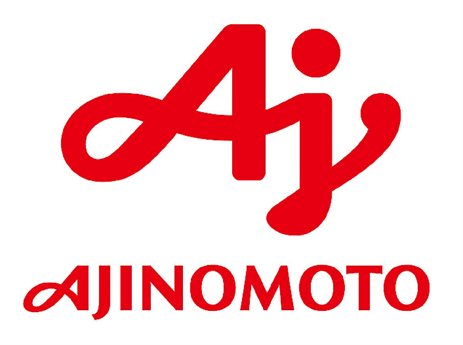
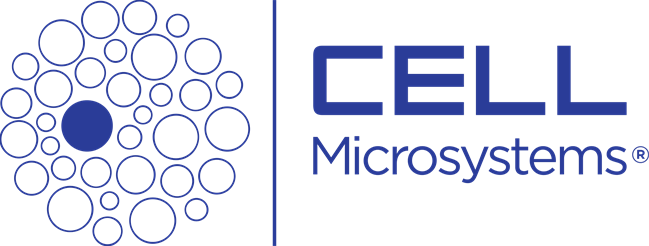
.png)
.png)
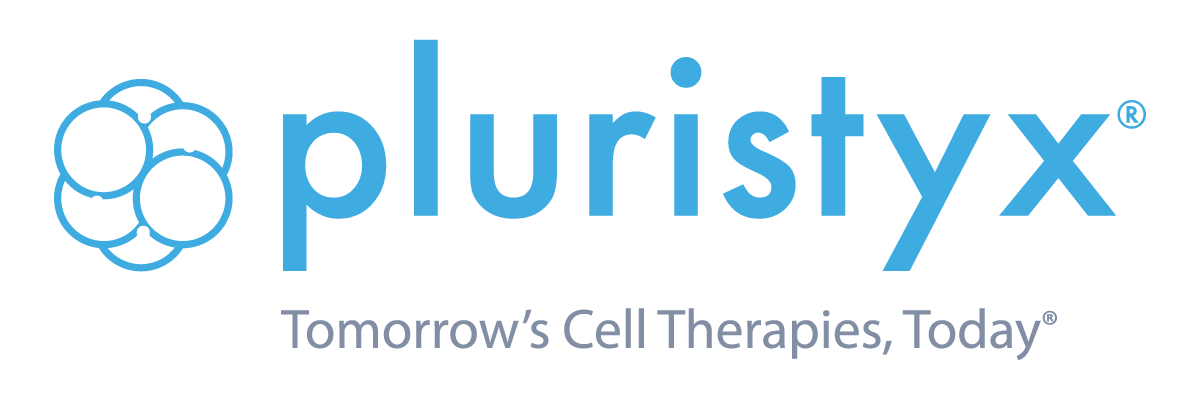
.png)
.png)
.png)
.png)

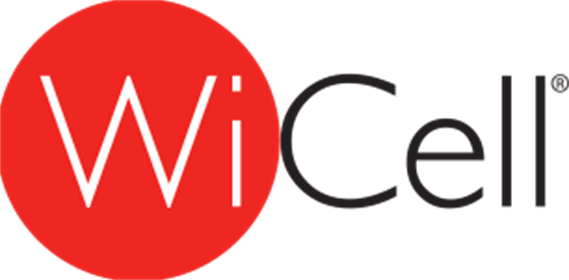
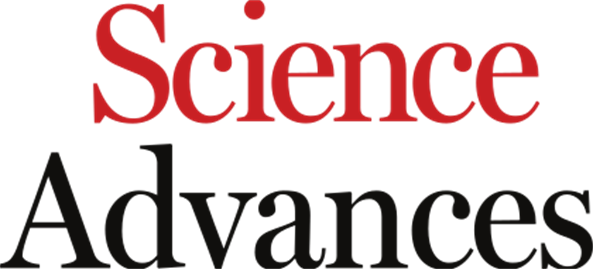

.png)
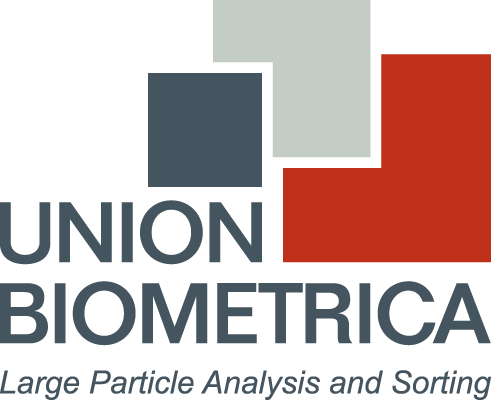

.png)
.png)
.png)

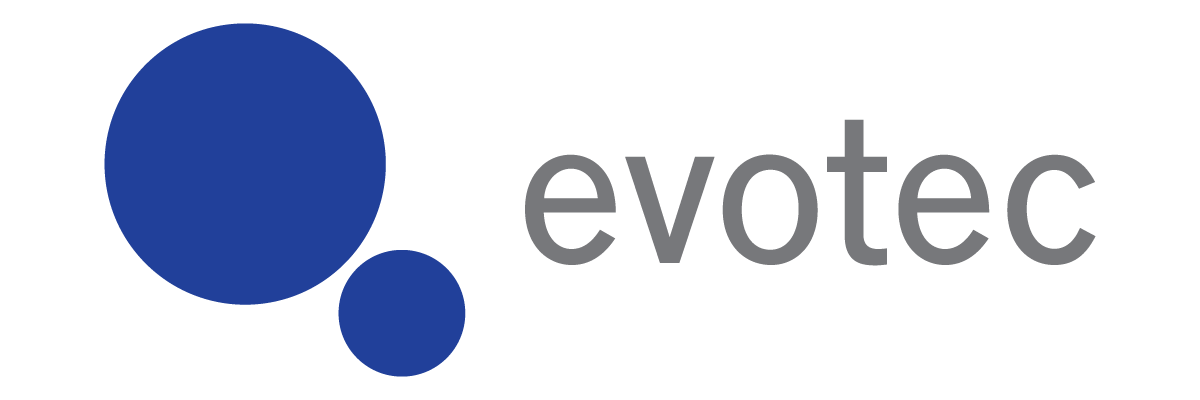
.png)

.png)
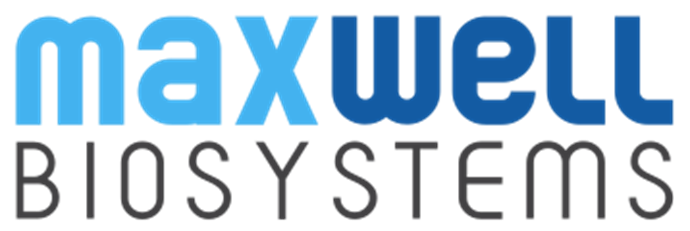
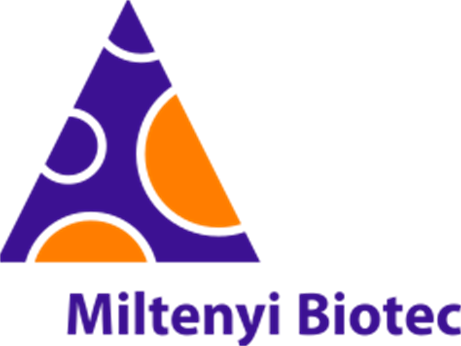
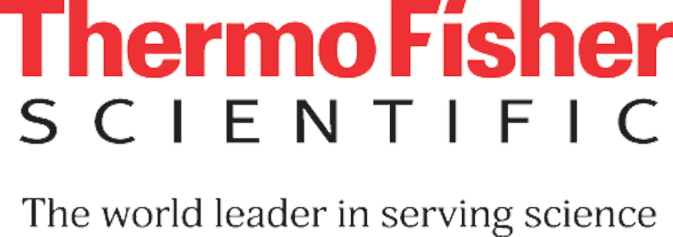
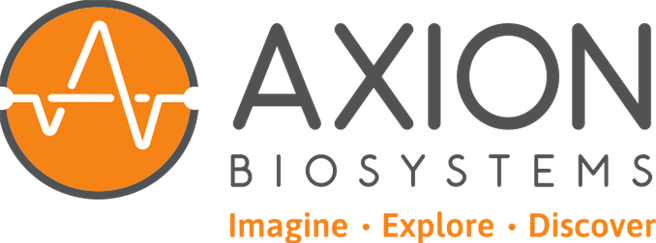

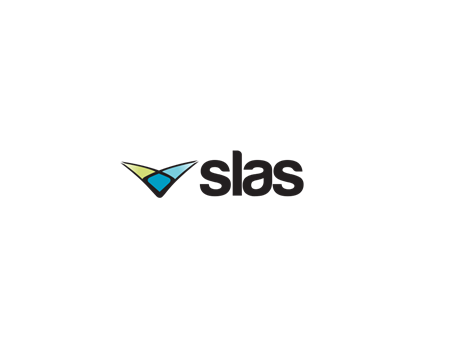
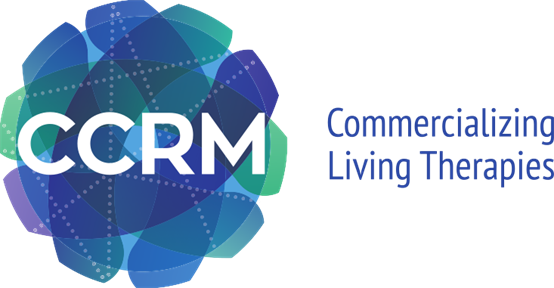


.png)


.png)
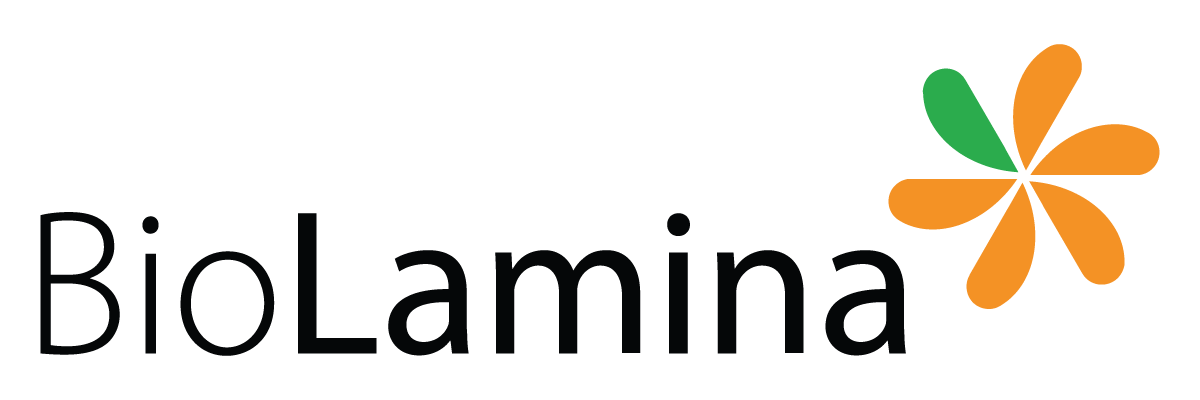
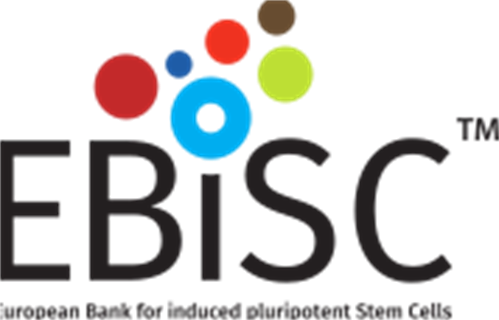
.png)
.png)
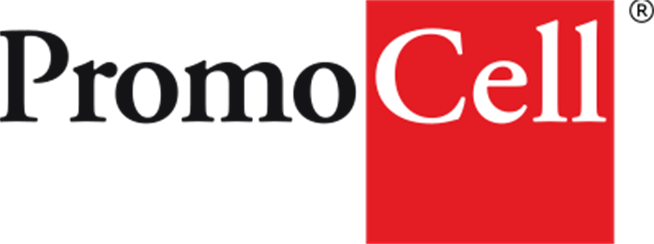



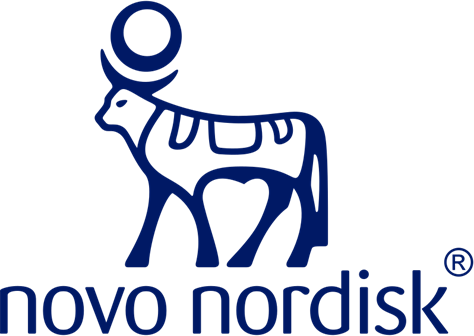
.png)





.png)

.png)
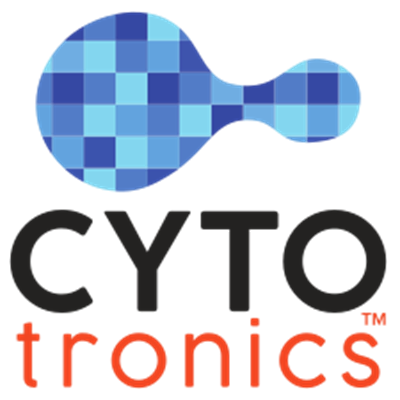
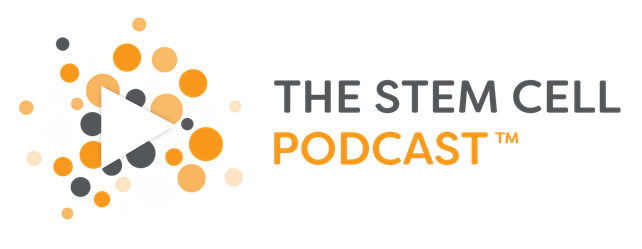
.png)
.png)